Casa de Venezuela
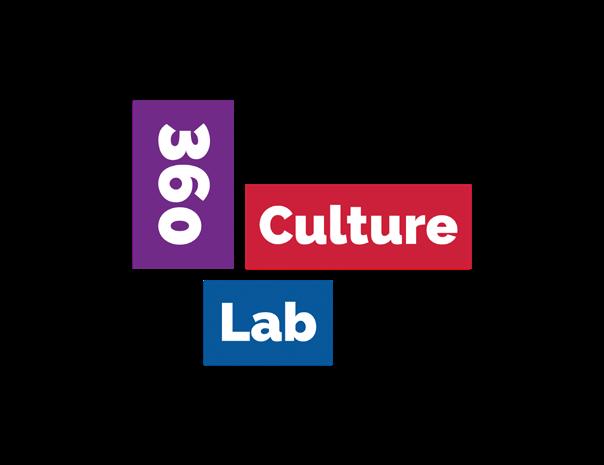


Diálogo 365: New Rhizomes Exhibition August 12–September 9, 2022
 Cover art by Henry Bermudez, Untitled, 2022, Mixed Media, 12 x 8 inches
Cover art by Henry Bermudez, Untitled, 2022, Mixed Media, 12 x 8 inches
3 Diálogo 365: New Rhizomes Exhibition 360 Culture Lab 4 Curatorial Statement 5 Artist's Images 6–31 Mission of Fleisher 32 Mission of Casa de Venezuela 33 Statement by Project Director 34–35 Casa de Venezuela Events 36–41 Index 42–47
360 Culture Lab
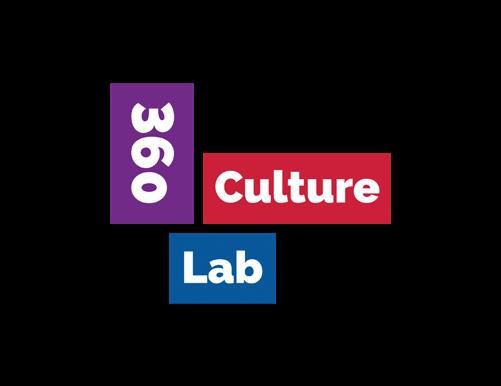
360 Culture Lab* partnered Fleisher Art Memorial with collaborators in the Venezuelan and Indonesian communities for a series of experiential place–keeping cultural exhibitions and arts presentations. This partnership was possible thanks to the efforts of local organizations serving the needs of immigrant communities in our area: Modero & Co., and Casa de Venezuela Philadelphia and Casa de Venezuela Delaware. The project facilitated Fleisher’s assets including spaces, resources, and expertise into the hands of immigrant community members as a means to honor, preserve, and share Venezuelan and Indonesian cultural life and traditions. Together, we created a lab for ideas: an arts incubator for new and growing immigrant communities in South Philadelphia and beyond. It was essential for Fleisher to provide a space in our neighborhood in which they felt welcome and safe. In order to be inclusive, we welcomed other partnerships and organizations to collaborate on our projects with the sole purpose of contributing and sharing art with our city.
From the beginning, Fleisher was committed to exploring, with our partners, new ways to promote the arts culturally, understanding that art means many different things to individuals with different cultural backgrounds. The pandemic presented us with tough challenges that required creative solutions in order to engage communities and work with them. Keeping the arts alive was always the main goal for everyone and raising awareness about social issues and Covid was a priority. Fleisher and its communities acknowledged the power of art in challenging times and understood that art can be a source of hope, resilience, solace, and purpose and makes us stronger as a community.
*Fleisher Art Memorial's 360 Culture Lab partnerships with Modero & Co and Casa de Venezuela are supported by The Pew Center for Arts & Heritage
Laboratorio Cultural 360
El Laboratorio Cultural 360 * es un proyecto colaborativo entre Fleisher y las comunidades de Venezuela e Indonesia, este proyecto está basado en una serie de exhibiciones y experiencias artísticas para la conservación y difusión de la cultura. El proyecto fue posible gracias a la participación de las siguientes organizaciones: Modero & Co., Casa de Venezuela en Filadelfia y Casa de Venezuela en Delaware. Estas organizaciones sirven a comunidades de inmigrantes en el área de Filadelfia, sur de Nueva Jersey y Delaware.
A través del proyecto Laboratorio Cultural 360, se pusieron a disposición espacios, recursos y la experiencia artística de Fleisher Art Memorial para honorar, preservar y compartir las tradiciones culturales de Venezuela e Indonesia. Juntos, creamos un laboratorio para desarrollar nuevas ideas; una incubadora de arte, para comunidades emergentes de inmigrantes en el área del sur de Filadelfia y más allá.
Desde el principio de este proyecto, Fleisher se comprometió junto a sus colaboradores a explorar y hallar nuevas formas para promover el arte bajo una perspectiva artística cultural, con la certeza de que el arte tiene un significado diferente para cada cultura y origen. Otro desafío importante fue el desarrollo del proyecto en medio de la crisis de la pandemia, este reto requirió soluciones creativas para lograr a desarrollar eventos y cautivar la participación de las comunidades de una manera responsable.
Mantener el arte vivo fue siempre una prioridad para todas las personas envueltas en el proyecto Laboratorio Cultural 360, así como también crear conciencia a través del arte a cerca de los problemas sociales que están afectando a los miembros de estas comunidades.
El proyecto Laboratorio Cultural 360 ha dado la oportunidad a Fleisher y sus colaboradores de experimentar el poder transformativo del arte en tiempos difíciles, y observar en primera persona como el arte puede ser fuente de esperanza, resiliencia, consuelo y propósito, elementos que nos hacen una comunidad más fuerte.
*El Laboratorio Cultural 360 de Fleisher Art Memorial ha sido auspiciado por The Pew Center for Arts & Heritage
4
Curatorial Statement
For geographer Yi-Fu Tuan, understanding the human experiences of space and place informs “some of the more systematic relationships between and among the wealth of experiential components.”* Diálogo 365: New Rhizomes arrives at that juncture to see placemaking through a visible and absent mode, beyond existing functions in public art and urban architecture.
How can we extend our roots to build agency on an individual and community level in the midst of massive migrations and inequality? In what ways do we strengthen or sabotage our sense of place? The nineteen artists in New Rhizomes walk us through personal and global perspectives of placemaking while playing with the present and missing subject through mixed media, painting, printmaking, textile, video, drawing, and sculpture. For some artists, it is about conceptualizing numbers, objects, nature, and memories. For others, uncovering those gaps addresses our involvement in hindering place for others.
The 20+ works in this exhibition bring about a particular sensibility for nature, the self, mobility, and the interpersonal. Dualism and seriality decode place by taking space. But the experience of these artists as part of the Latin American and Caribbean diaspora helps us see all of this through another lens.
I thank Casa de Venezuela and Fleisher Art Memorial–organizations with strong roots in supporting immigrant communities–as well as The Pew Center for Arts & Heritage for giving space to these exceptional artists, an important undertaking for creatives who still need the visibility and recognition regardless of their length of practice.
Andreina Castillo, Co-Curator of Diálogo 365: New Rhizomes
*Yi-fu Tuan, Space and place : the perspective of experience (Minneapolis : University of Minnesota Press,1977), p. 202
Declaración Curatorial
Para el Geógrafo Yi-Fu Tuan, la comprensión de las experiencias humanas relativas al espacio y lugar, nos informa acerca “la relación sistemática entre los componentes del bienestar y la experiencia.”* Diálogo 365: Nuevas Rizomas se une a ese punto de encuentro donde se puede apreciar el lugar de lo visible e intangible, más allá de las funciones del arte público y arquitectura urbana convencionales.
¿Cómo podemos extender nuestras raíces para construir lugares seguros de pertenencia a nivel individual y comunitario, en medio de inmigraciones masivas e injusticia? ¿En qué medida reforzamos o saboteamos nuestro sentido de lugar de pertenencia? Los 19 artistas en Nuevas Rizomas nos muestran el camino a nuevas perspectivas personales y globales de lugares de pertenencia, mientras juegan con la presencia y ausencia del sujeto a través de mixed media, arte en fibra, grabado, pintura, video, dibujo y escultura. Algunos artistas conceptualizan el lugar a través de los números, objetos, naturaleza y memorias. Para otros, revelar esos huecos nos involucra en el difícil proceso de como impactamos lo que es el lugar de otros.
Los más de 20 trabajos en esta exhibición nos muestran una sensibilidad particular por la naturaleza, el ser, la movilidad y relaciones interpersonales. Dualismo y serialismo para decodificar espacios a través de la adopción de un lugar. Pero la experiencia de estos artistas como parte de la diáspora Latinoamericana y del Caribe nos ayuda principalmente a observar nuestro entorno desde otro punto de vista.
Agradezco a las organizaciones Casa de Venezuela y Fleisher Art Memorial por el largo compromiso para ayudar a nuestras comunidades inmigrantes, así como también The Pew Center for the Arts & Heritage por dar espacio a estos extraordinarios artistas, una misión importante para aquellos quiénes siguen necesitando visibilidad y reconocimiento a pesar de su trayectoria artística.
Adreina Castillo, Co-Curadora de Diálogo 365: Nuevas Rizomas
*Yi-fu Tuan, Espacio y Lugar : La perspectiva de la experiencia (Minneapolis : University of Minnesota Press,1977), p. 202.
5
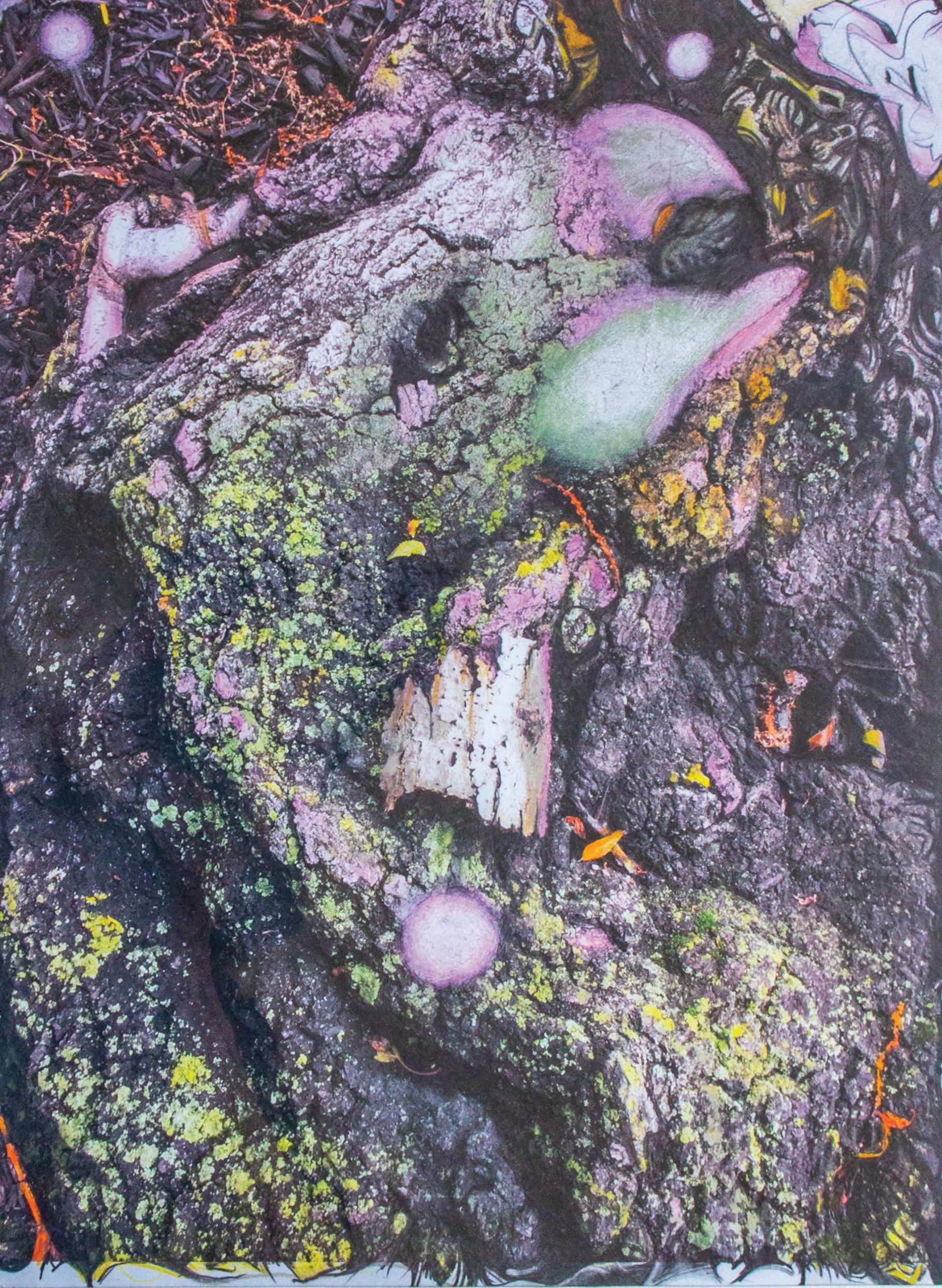
6

7
Johnny Irizarry
Untitled, 2021–2022
Mixed Media. 20 X 16 inches
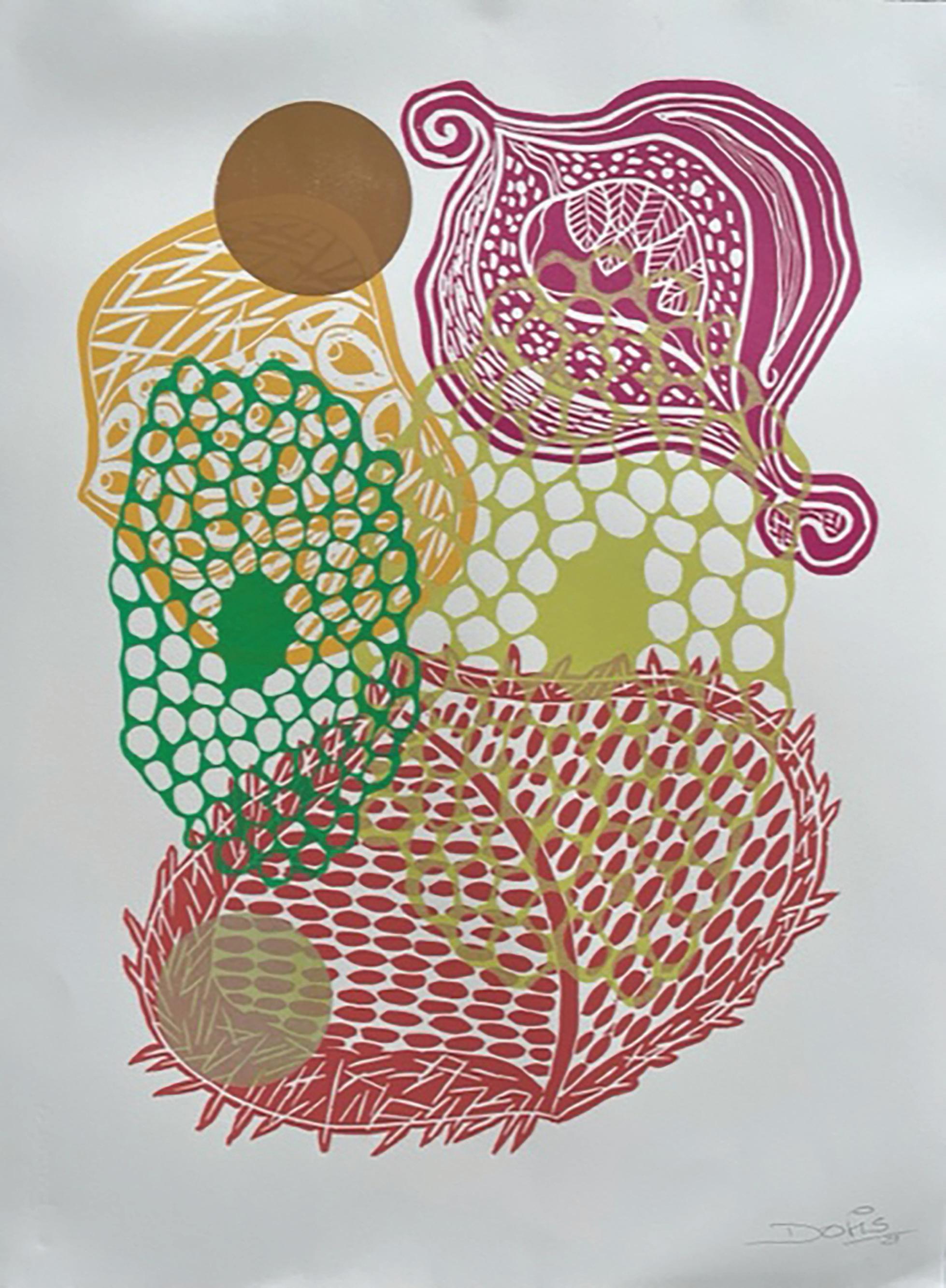
8
Doris Nogueira-Rogers
Amazon’s Genesis (series of 6), 2021, Woodcut. 30 x 22 inches

9
Alexis Duque Boat, 2015 Acrylic on canvas. 16 x 12 inches


11
Ana Mosquera Duran Rhumb Lines, 2020 Handwoven cotton ikat, data extracted from Venezuelan Facebook Groups. Variable dimensions.

Trochas 20 mil Pesos, 2019 TC2 woven cotton, posts on how to cross the border between Venezuela and Colombia scrapped from Facebook Group “Venezolanos en Cucuta” 25 x 120 inches

13
Ana Mosquera Duran
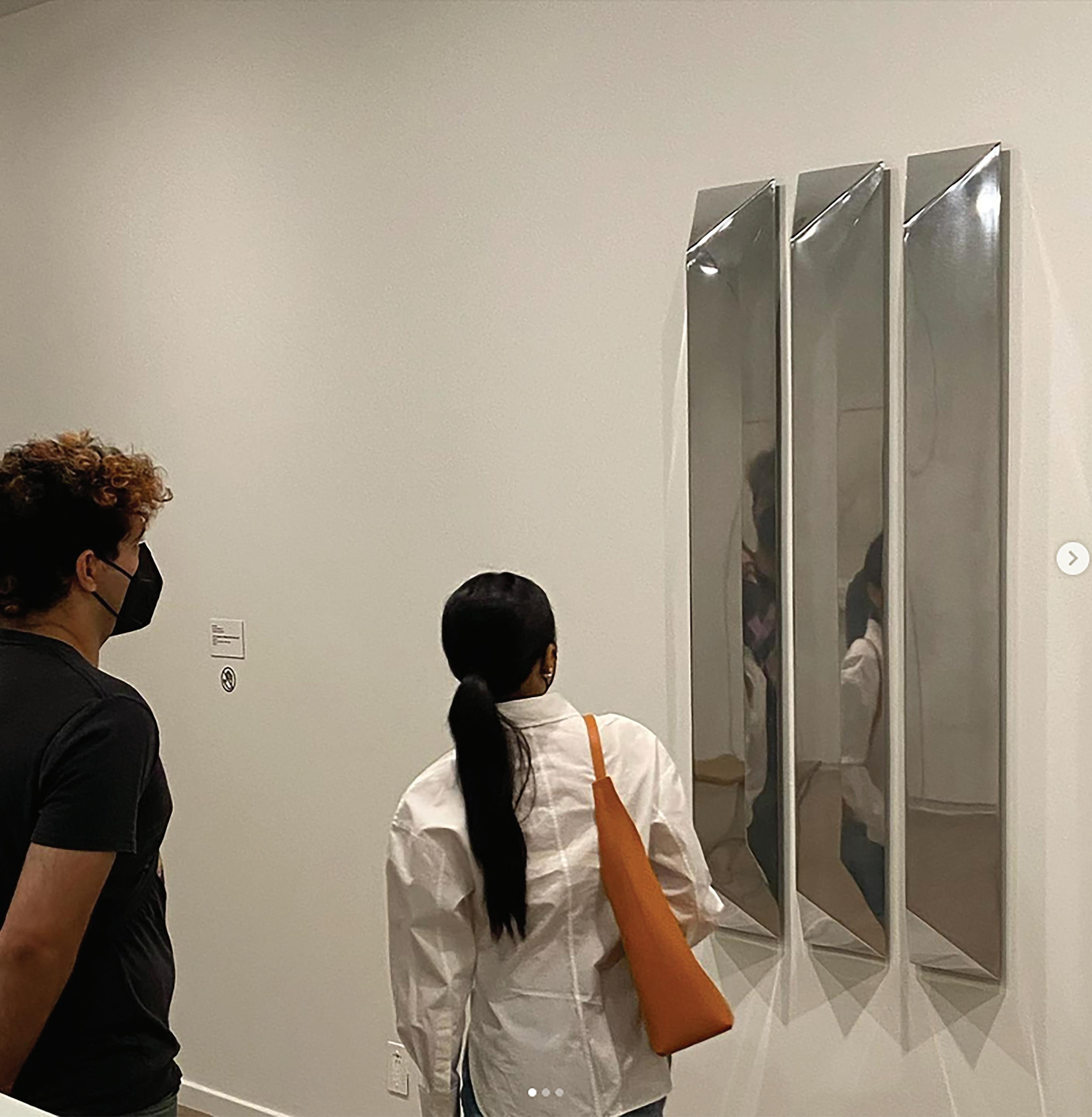
Gil
Resonant Bodies #1 Variation #1, 2020 Polished aluminum. Each bar: 8 x 59 x 5.5 inches
Resonant Bodies #8 , 2021 Aluminum, steel, and acrylic sheet. Custom playback system. Each module: 20 x 50 x 15 inches
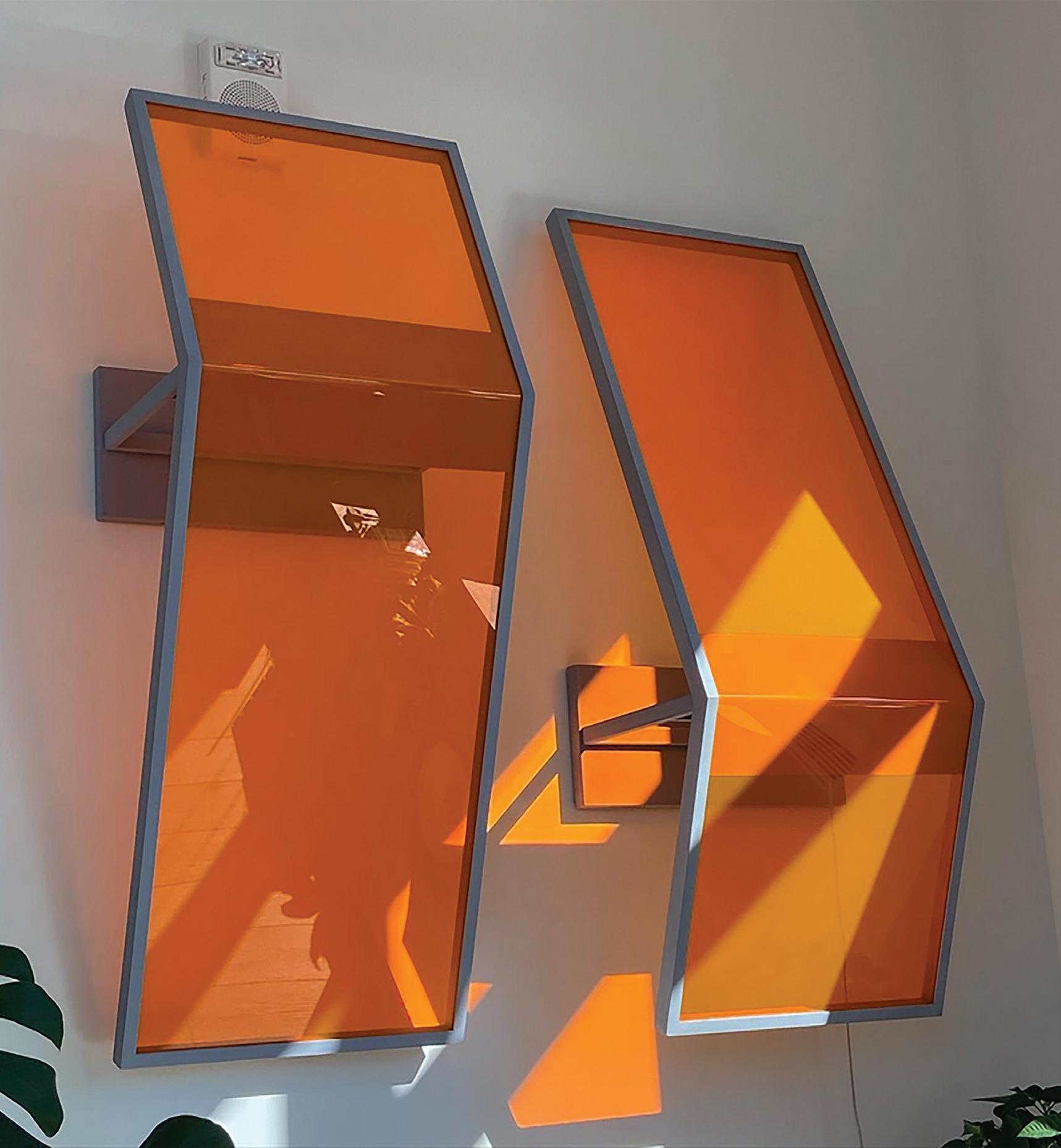
15
Wolfgang
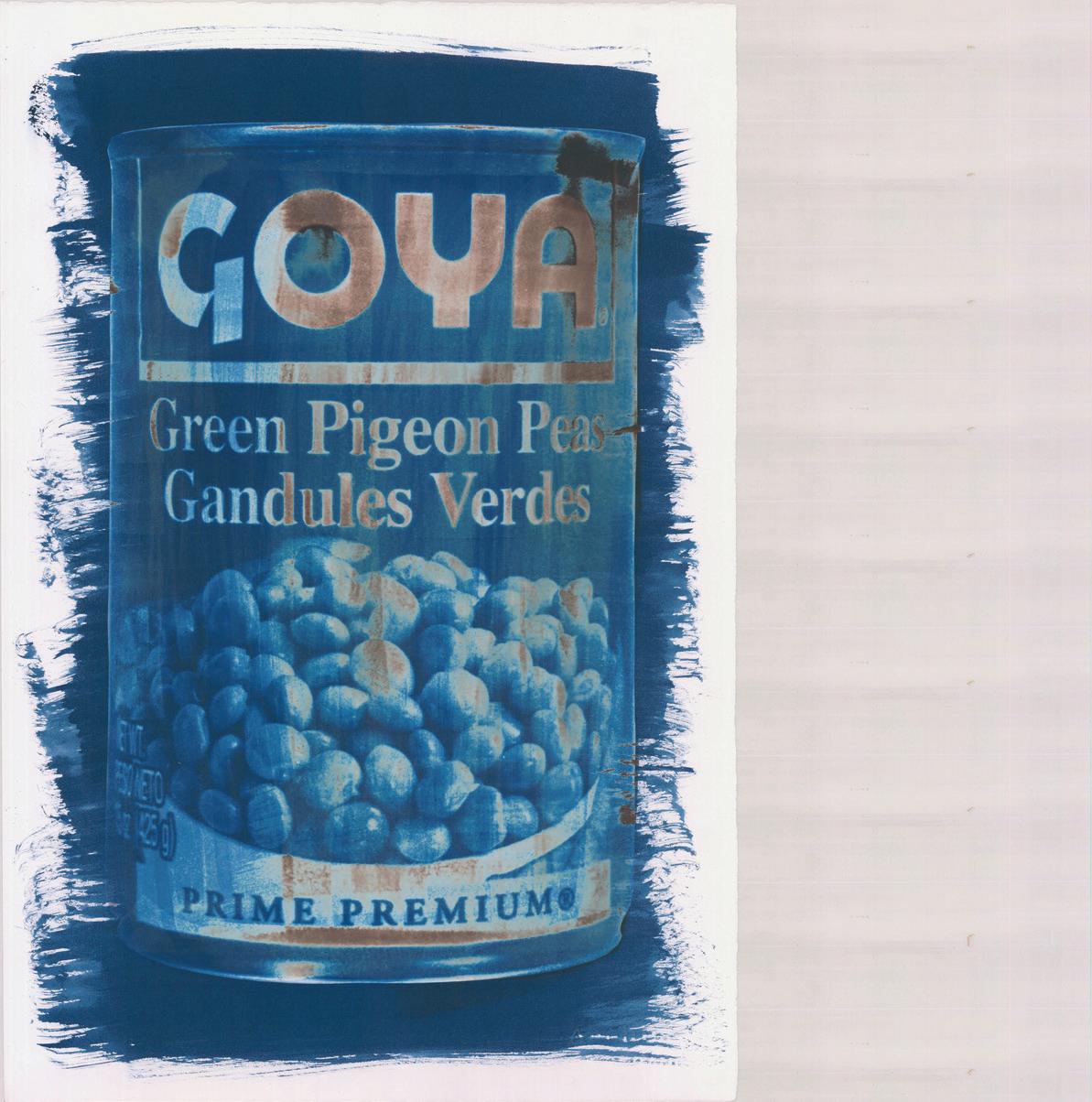
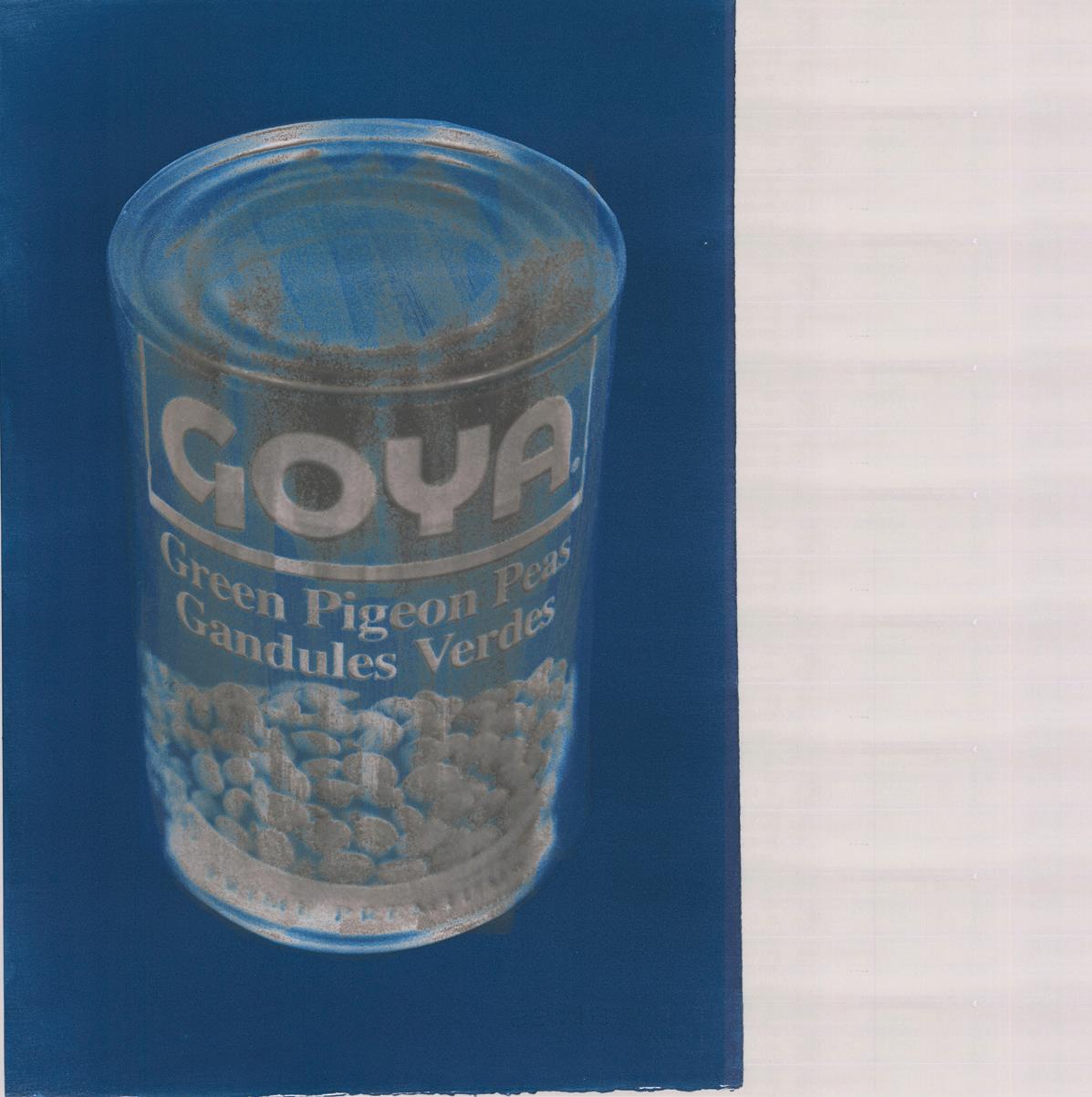
16
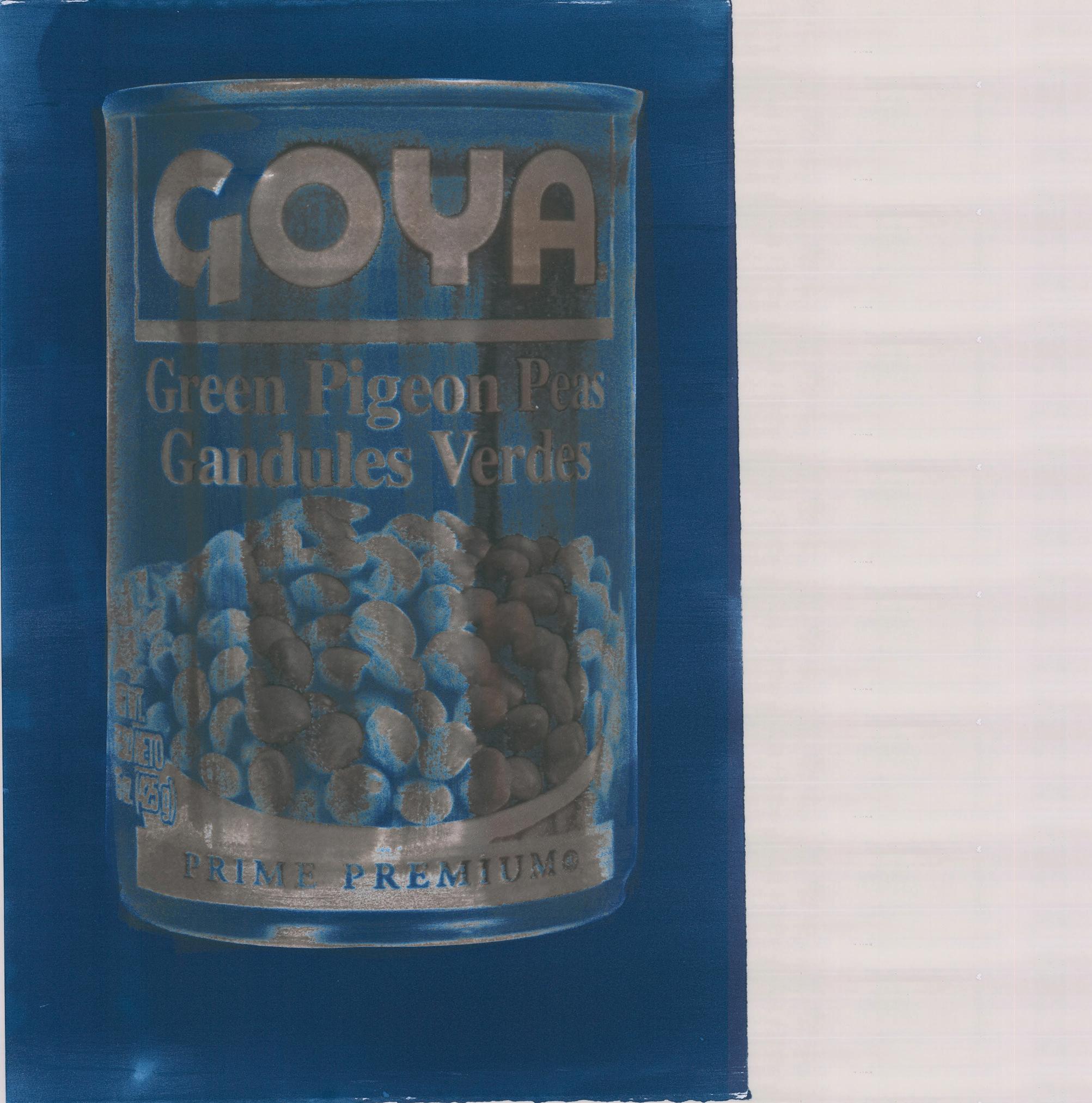
17
Kalena Marshall Arroz y no Gandules, 2022
Cyanotype with Van Dyke Brown. 22 x 15 inches
Triptych 1: A series
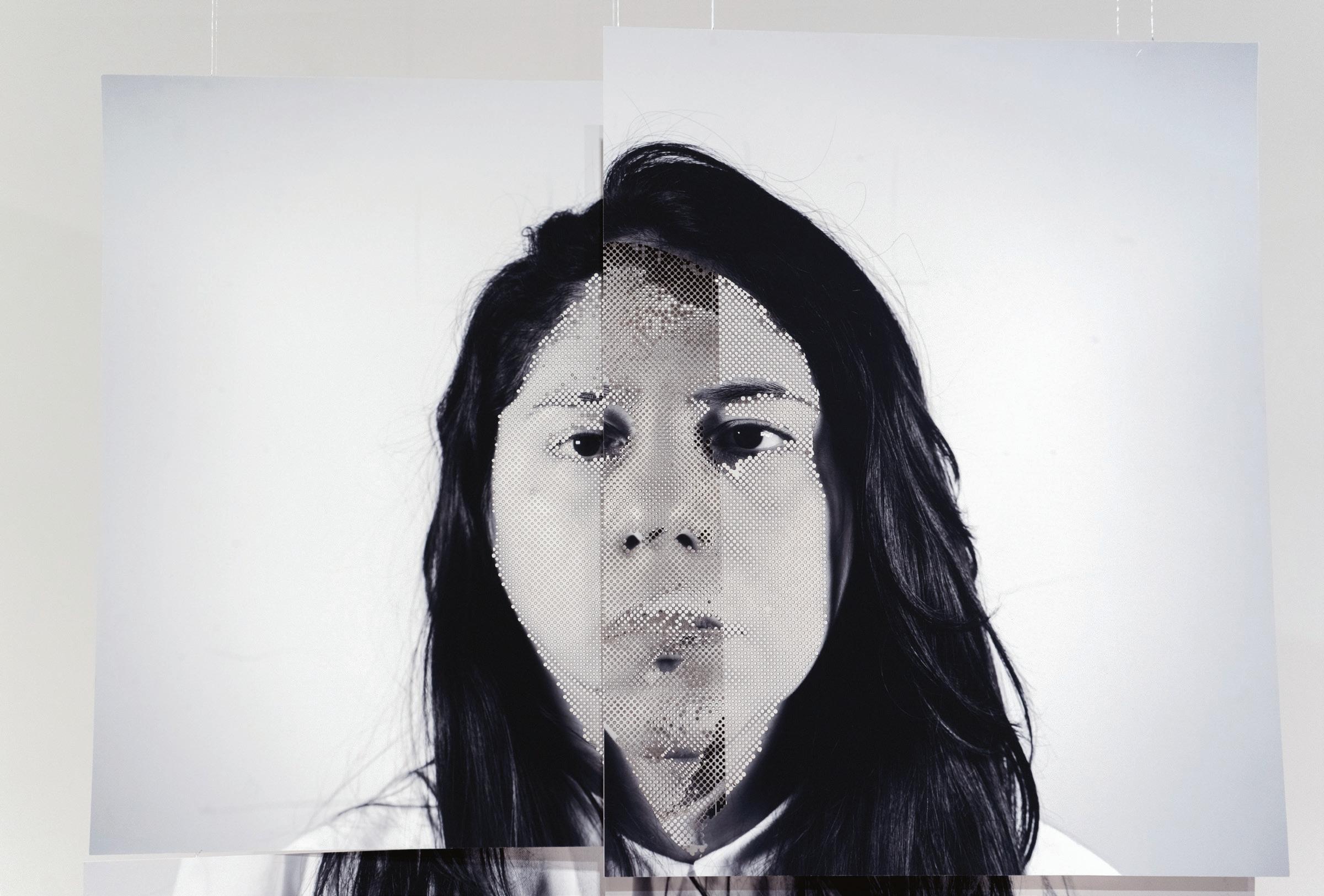
18
Idalia Vasquez-Achury
12,980 Masque, 2022
Archival inkjet print. 34 x 44 inches
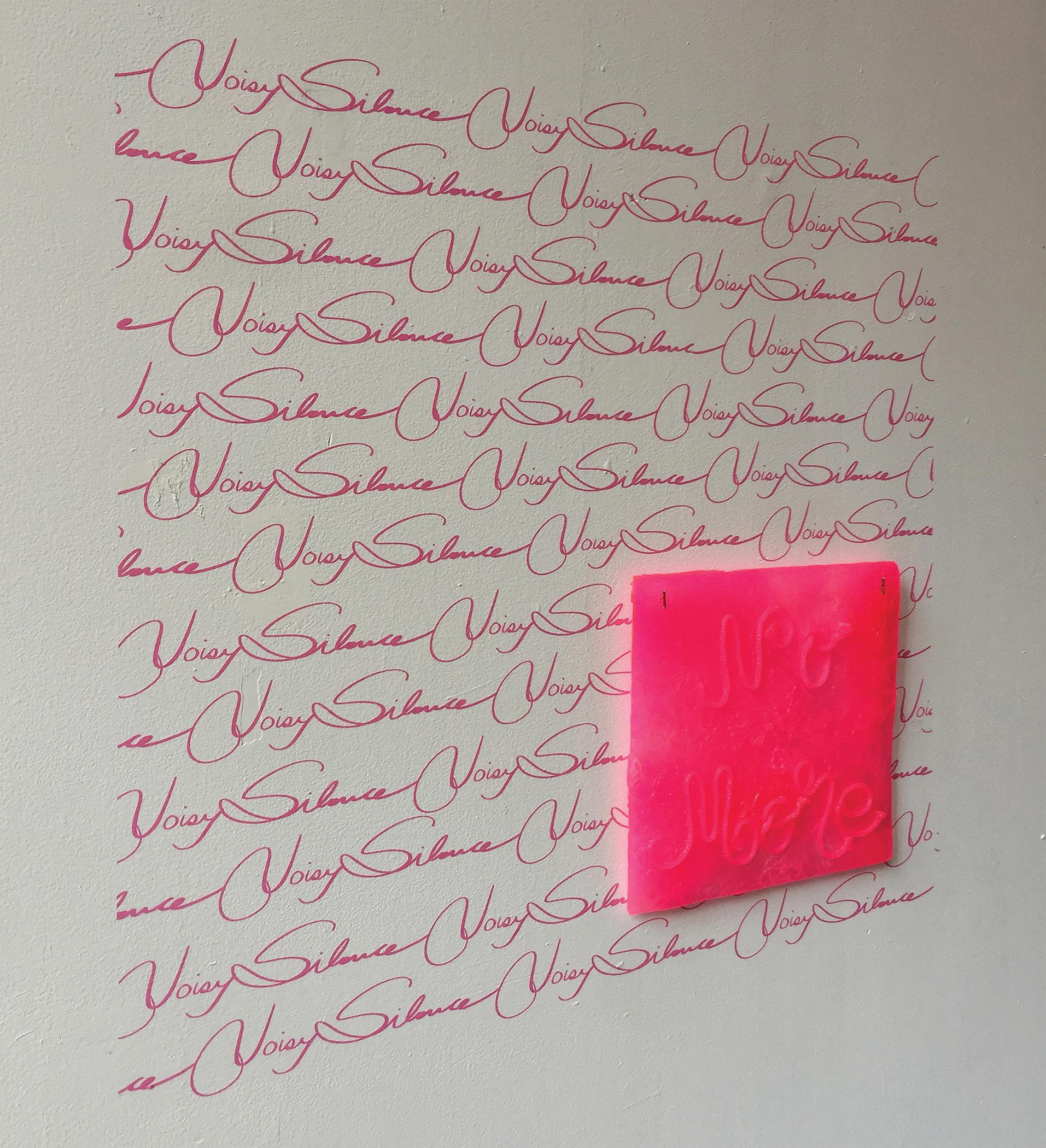
19
Nancy Saleme No More Noisy Silence, 2020
Resin and wall decal. Wall vinyl: 28 x 28 inches, resin piece 11 x 11 inches
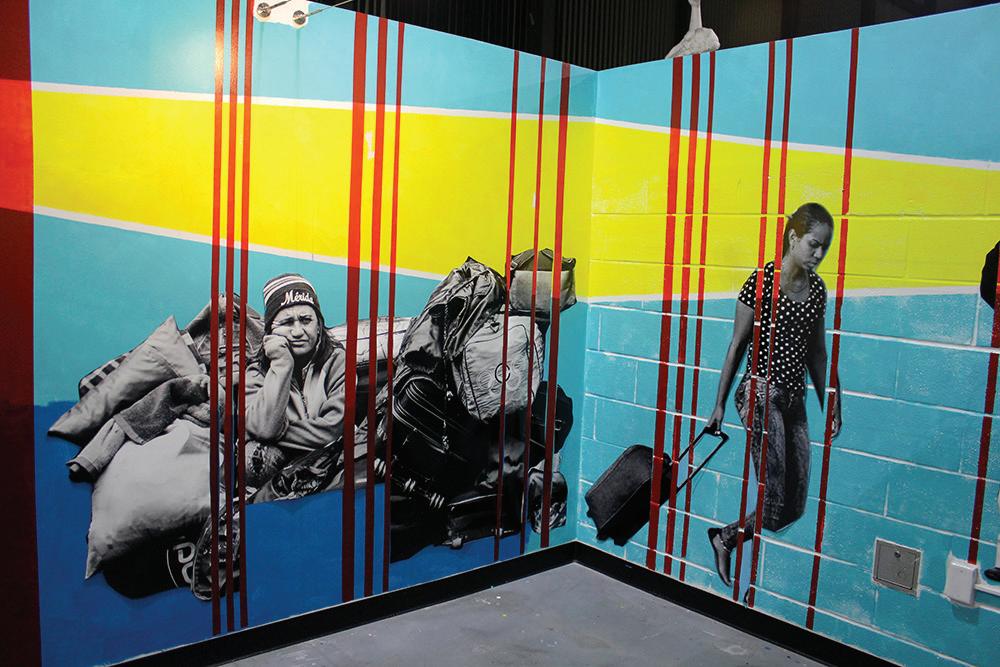
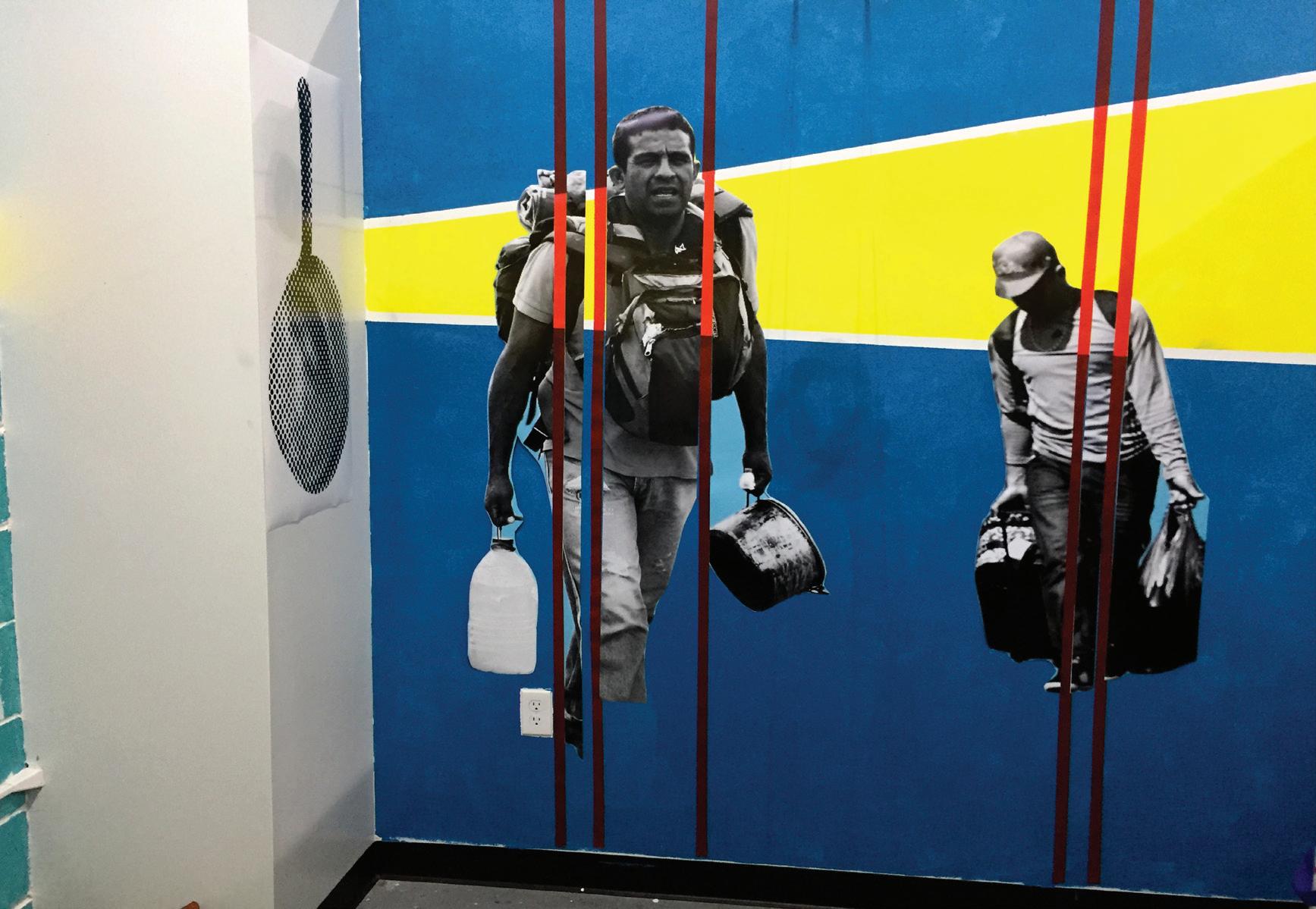
20
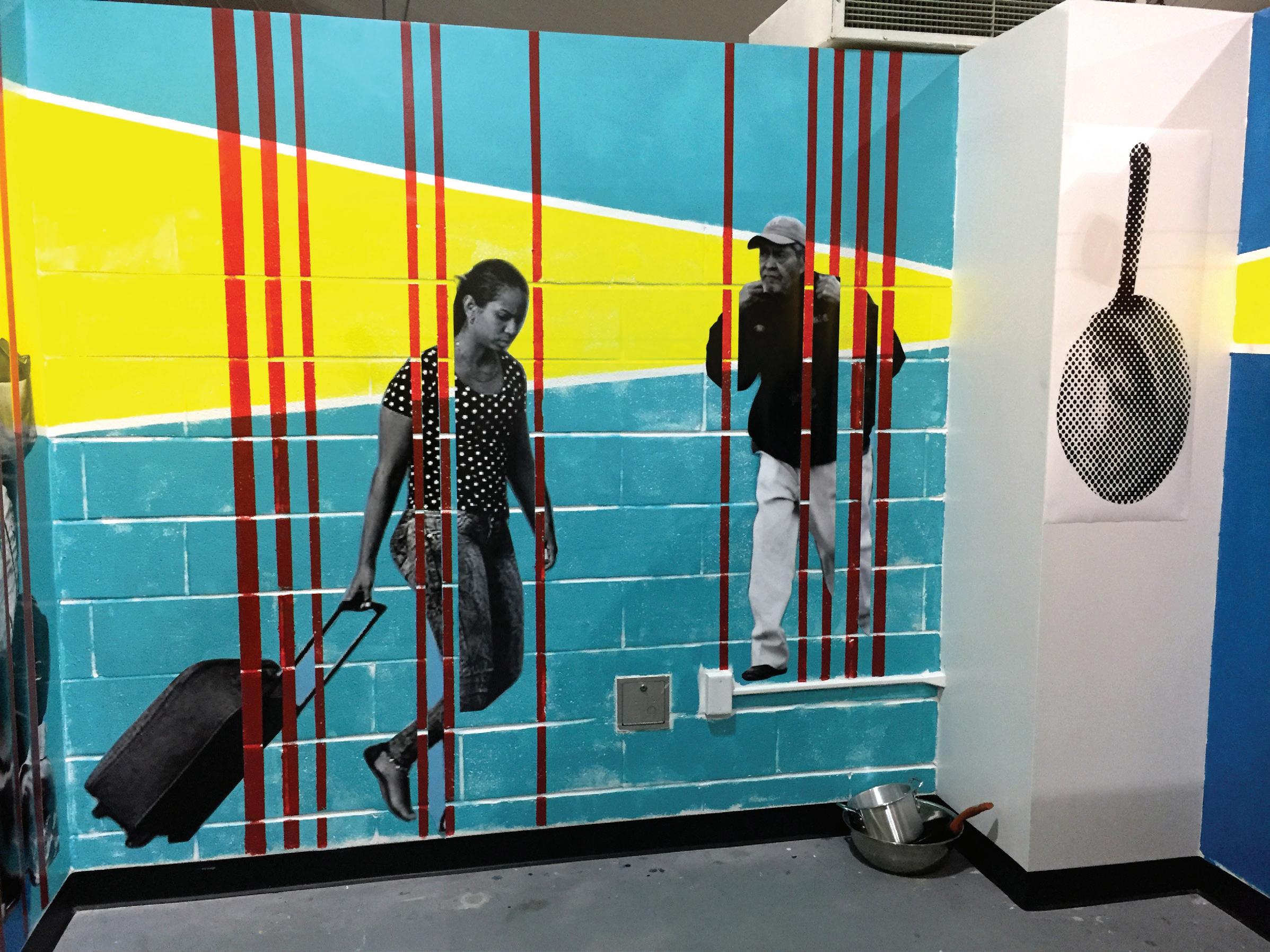
21
Patricia Cazorla One Walk, 2018 Digital prints, acrylic paint, pan, and pots, site-specific, 84 x 360 inches
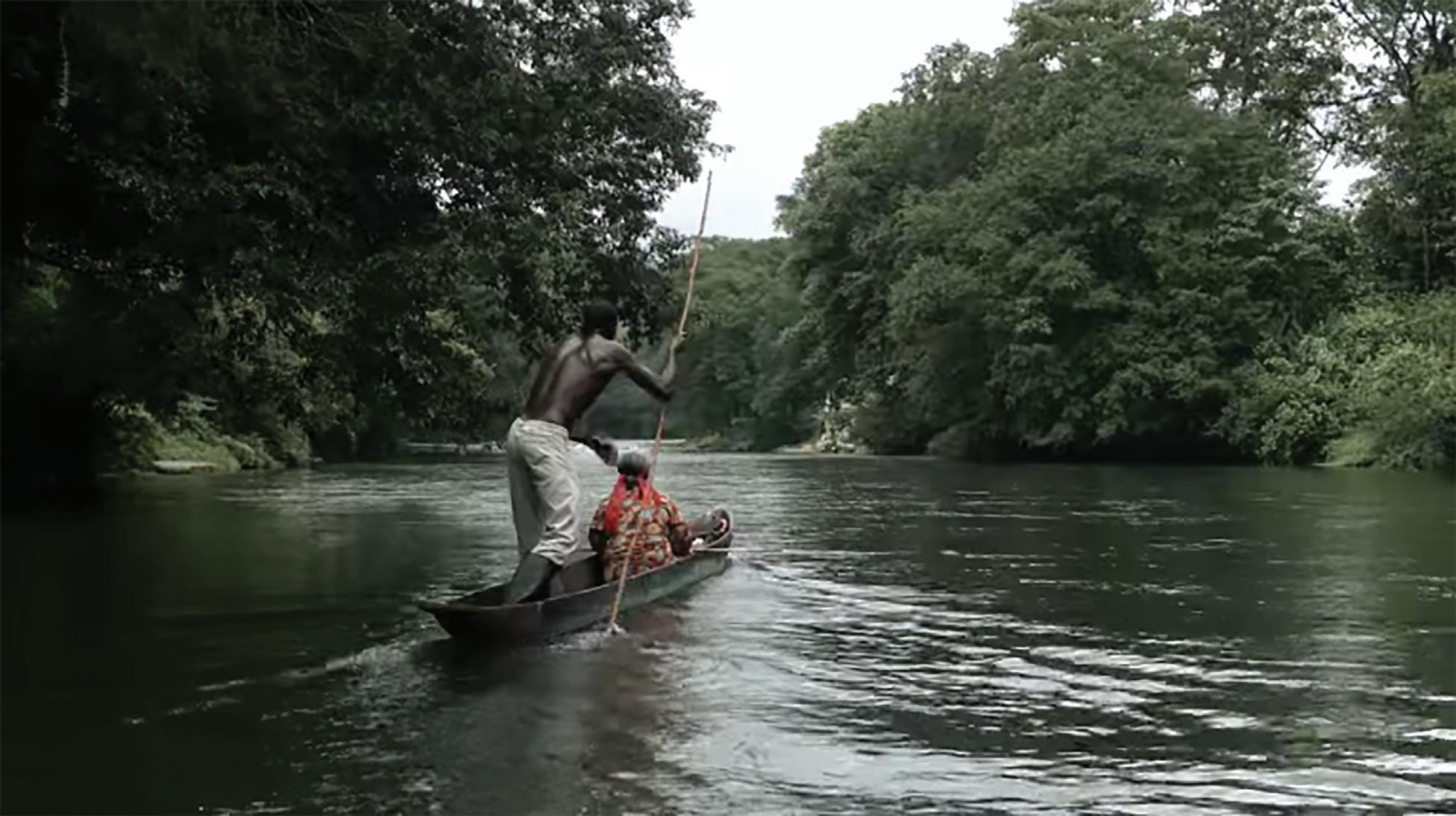
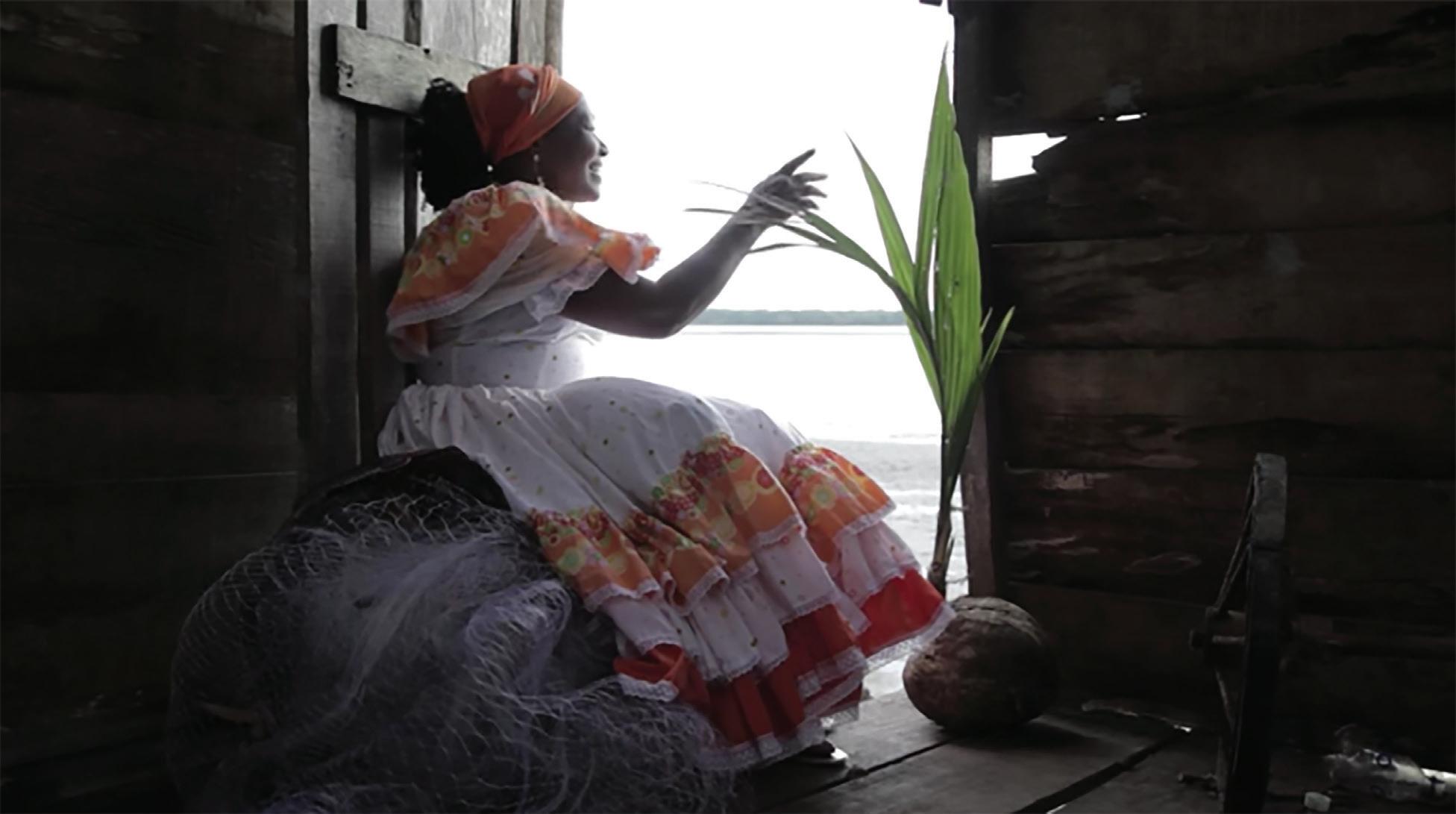
22
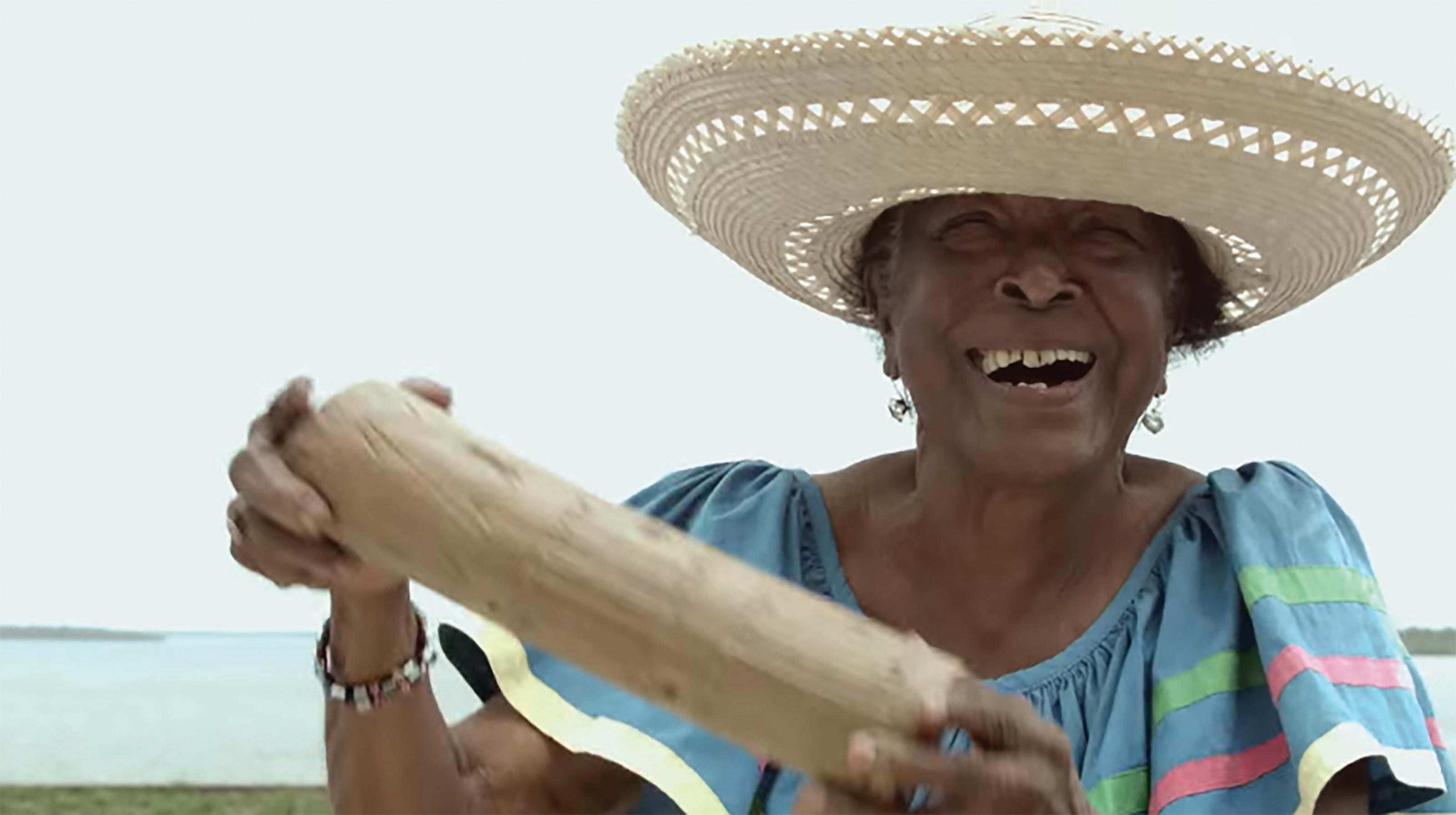
23
Alejandro Ceballos La Bahía de la Cruz, 2019 Film. 1920 x 1080 px, 8:00 min

24
Tania Qurashi
Your Garden Grows, 2021
Oil on panel. 20 x 16 inches
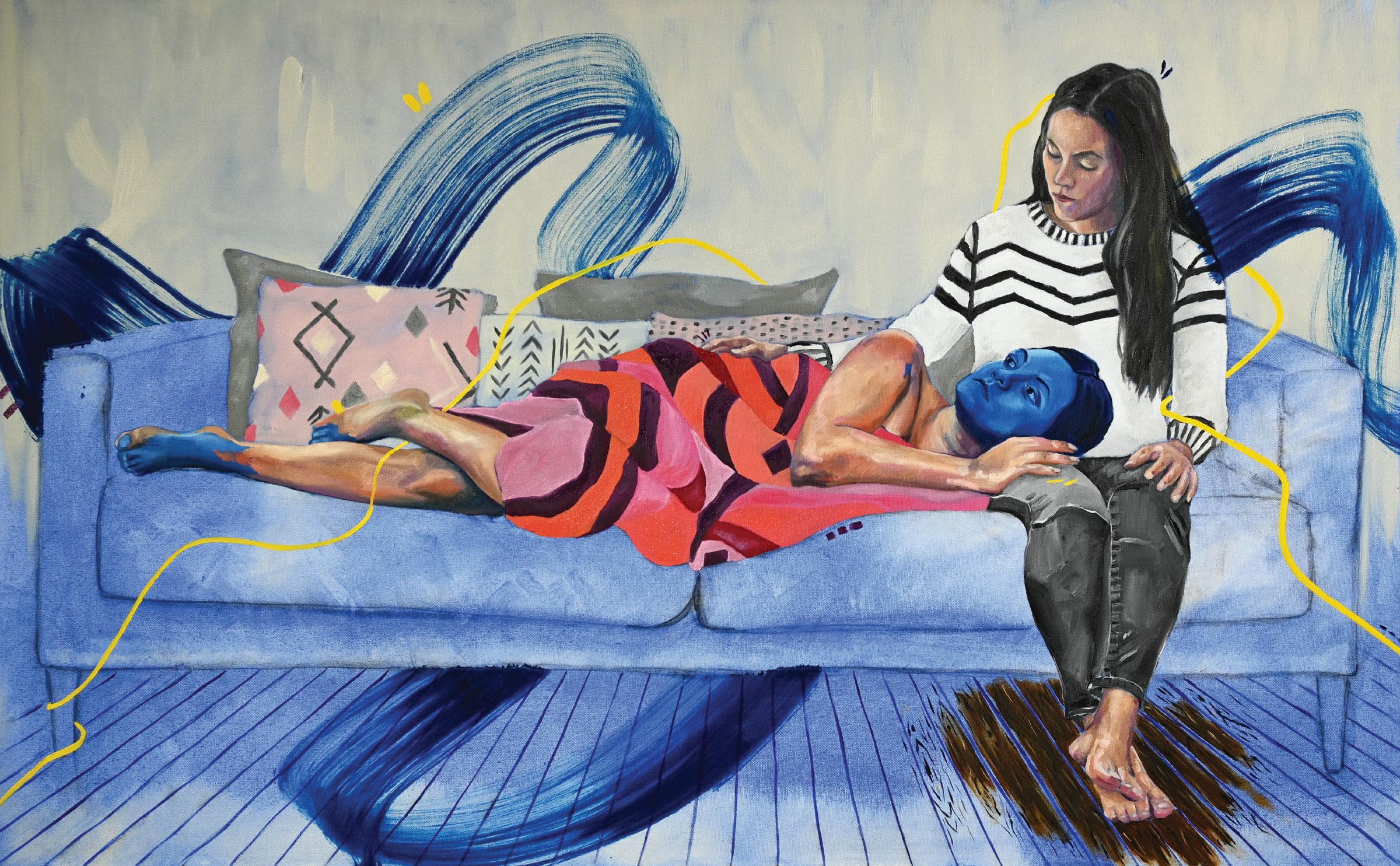
25
Patricia Patzi
Amor Propio. 2021
Oil on Canvas. 30 x 48 inches

26
Henry Bermudez Untitled, 2022 Mixed media. 2 x 8 inches

27
Lina Cedeño & Pedro Ospina Untitled Mixed media. 5 x 6 x 5.5 feet
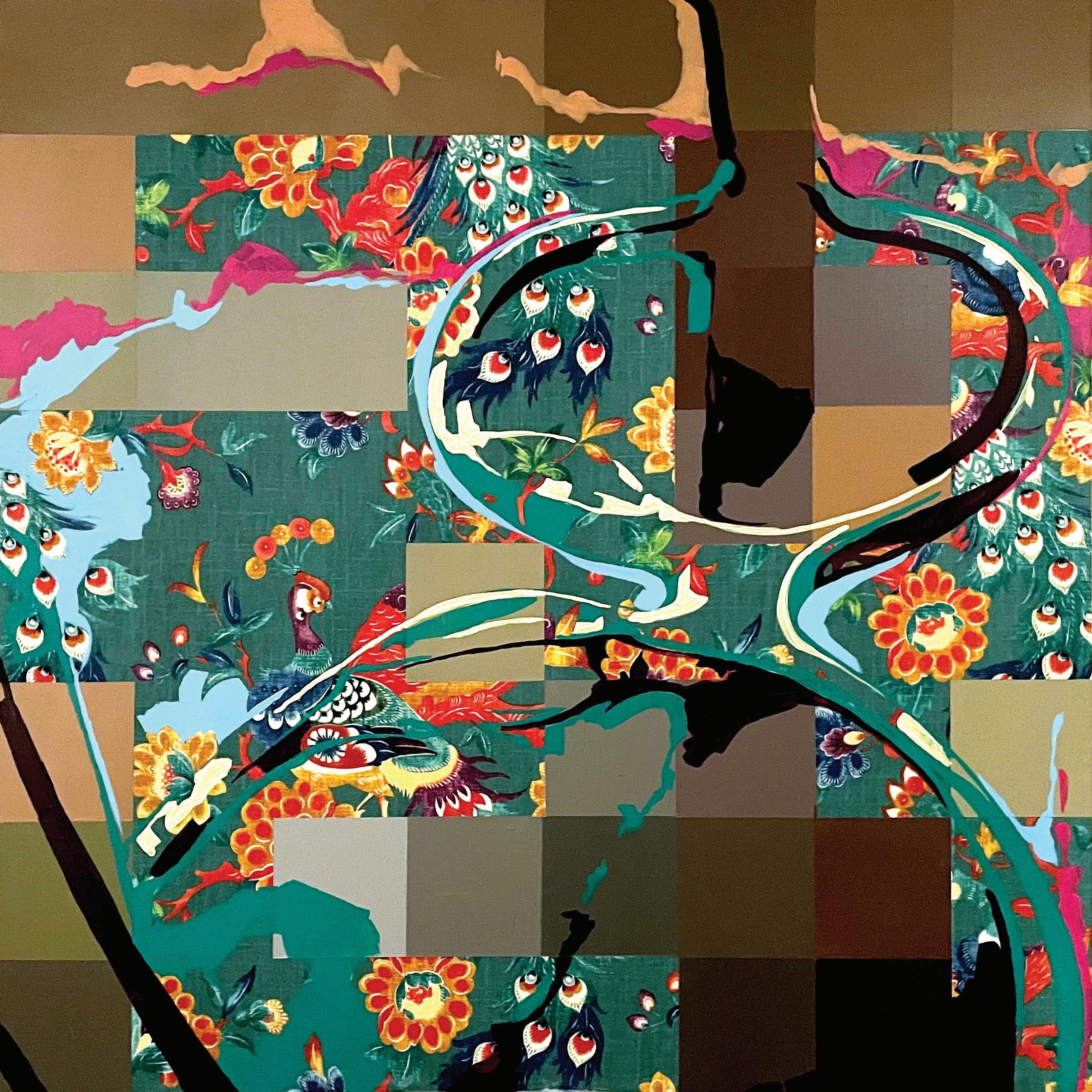
28
Anthony Vega Denotations (#sunglasses), 2021 Acrylic on Fabric. 40 x 40 inches
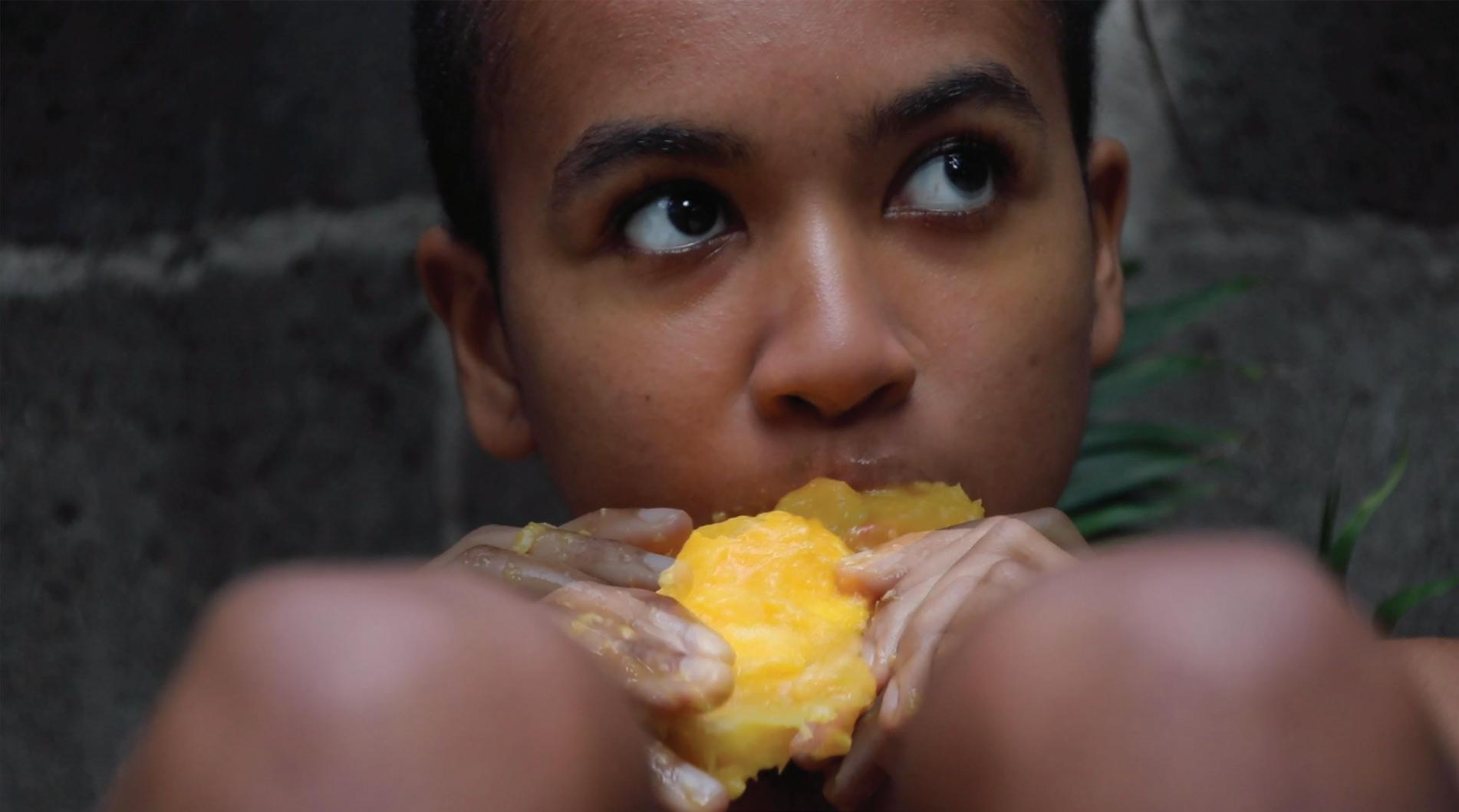

29
Alissa Roach
Sydenham Villas, 2020
Video and sound. Max length 9:05

30
Jotham Malave
Mar de angustias, 2020
Oil on canvas. 32 x 24 inches
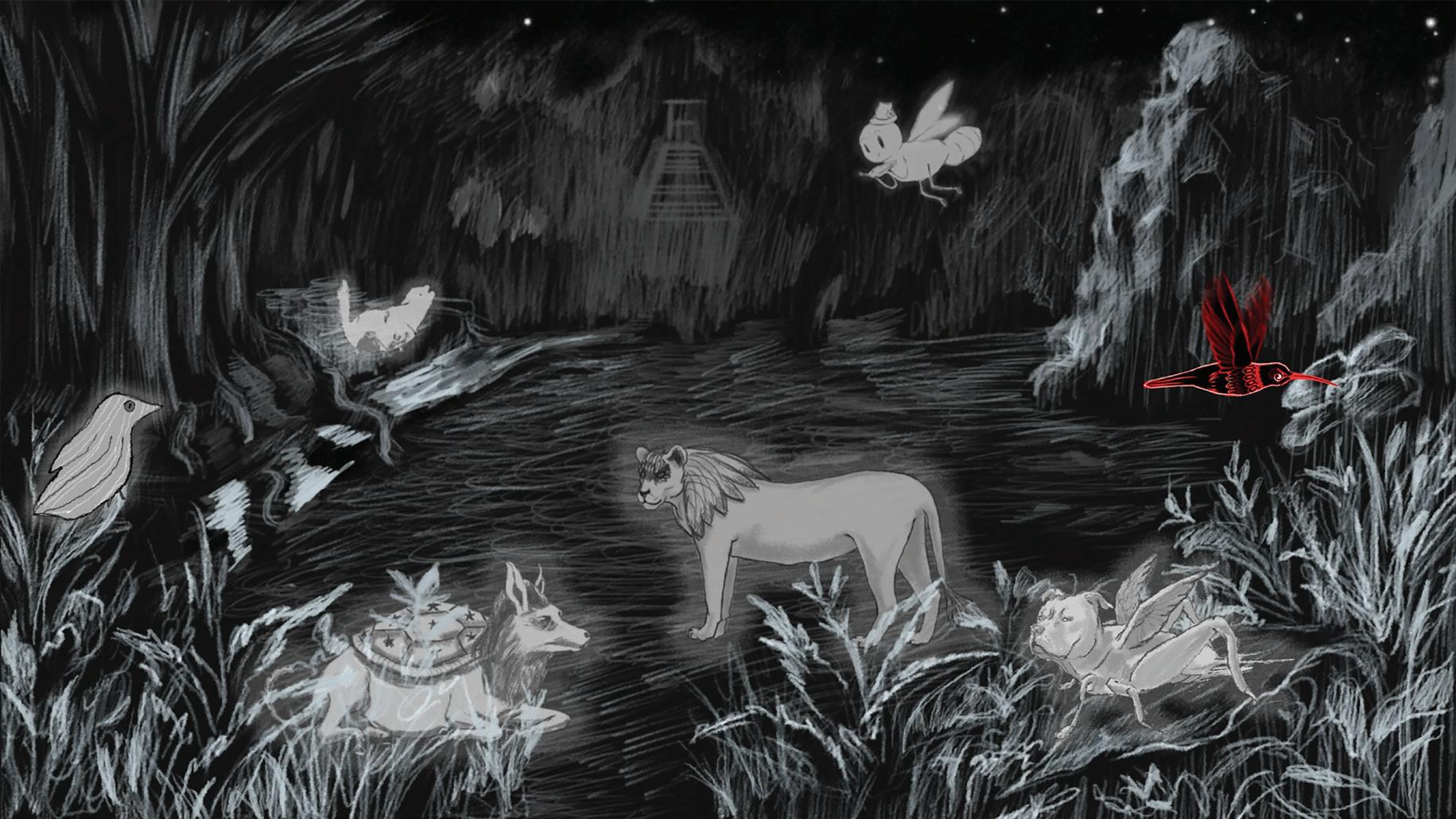

31
Superheroes Community artist collective & LEMUS Superheroes, 2021
Video. Length: 5:10
Fleisher Art Memorial
Founded in 1898, Fleisher Art Memorial is one of the country’s oldest nonprofit community art schools and we are committed to advancing the vision of our founder, Samuel S. Fleisher, who believed that art is one of society’s greatest assets and equalizers. Fleisher’s mission is to make art accessible to everyone, regardless of economic means, background, or artistic experience and every year, more than 20,000 people experience the transformative power of art by participating in our classes, tuition-free classes, workshops, exhibitions, and community-based programs.
The Pew Center for Arts & Heritage is a multidisciplinary grantmaker and hub for knowledge- sharing, funded by The Pew Charitable Trusts, dedicated to fostering a vibrant cultural community in Greater Philadelphia. The Center invests in ambitious, imaginative, and catalytic work that showcases the region’s cultural vitality and enhances public life, and engages in an exchange of ideas concerning artistic and interpretive practice with a broad network of cultural practitioners and leaders.
The views expressed are those of the author(s) and do not necessarily reflect the views of The Pew Center for Arts & Heritage or The Pew Charitable Trusts.
Fleisher Art Memorial fue fundada en 1898 y es una de las escuelas y centros comunitario sin fines de lucro más antiguos del país. El compromiso de nuestra organización es continuar con la visión de su fundador, Samuel S. Fleisher, quién creía que el arte es uno de los mayores bienes y ecualizadores en nuestra sociedad. La misión de Fleisher es crear un espacio en donde el arte sea accesible a todos, sin importar los recursos económicos, el origen o la experiencia artística de la persona. Cada año, más de 20,000 personas experimentan el poder transformativo del arte, participando en nuestras clases, becas de estudio, talleres, exhibiciones y programas para la comunidad.
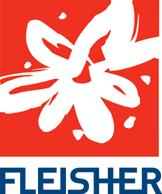
32
360 Culture Lab has been supported by The Pew Center for Arts & Heritage.
Casa de Venezuela
Casa de Venezuela is the first bilingual non-profit organization in the Greater Philadelphia region whose purpose is to advance the cultural heritage of Venezuela. Founded in March 2004, Casa de Venezuela offers a range of programs and services in order to engage the Venezuelan community and their friends. Some of these programs include musical presentations, traditional dance presentations, special events, festivals, markets, and outreach efforts.

Our mission is to promote the culture, roots, traditions, and folklore of Venezuela in the Delaware and Lehigh Valley regions through community, social, educational, and cultural events, and programs. The current crisis in our land has reshaped the mission of our organization and while we continue promoting our culture, arts, folklore, and idiosyncrasy, we are committed to educate the public about the humanitarian, political and economic crisis that Venezuela is going through. Our programs are meant to bring our community together and to welcome newly arrived migrants to our region. We also aim to continue offering aid to our people back in Venezuela by organizing community events and working with other organizations with the sole purpose of collecting aid and donations.
Our partnership with Fleisher Art Memorial through the 360 Culture Lab project has been a successful and joyful experience. Together, we have executed outstanding and well-attended programs during two years of collaboration. Working with Fleisher Art Memorial’s remarkable and highly professional staff has been an amazing experience and we are looking forward to continuing this partnership.
Diálogo 365: New Rhizomes marks the culmination of the 360 Culture Lab series with the presentation of outstanding works from 19 Latinx and Caribbean artists. Casa de Venezuela is looking forward to reinforcing the grow of this amazing partnership with Fleisher and will forever be thankful to The Pew Center for the Arts and Heritage for its support on this journey.
Casa de Venezuela es la primera organización bilingüe sin fines de lucro en la gran región de Filadelfia y su misión es difundir la herencia cultural de Venezuela. Fundada en marzo del 2004, Casa de Venezuela ofrece una gran variedad de programas y servicios a la comunidad, que incluyen: presentaciones musicales, bailes tradicionales, eventos especiales con el propósito de conectar a la comunidad y sus amigos.
Nuestra misión es promover la cultura, raíces, tradiciones y folklore de Venezuela en nuestra región a través de eventos y programas comunitarios, sociales, educacionales y culturales. Sin embargo, la crisis en nuestro país nos ha obligado a ajustar nuestra misión, y mientras la difusión de nuestra cultura, artes, folklore e idiosincrasia sigue siendo importante, estamos comprometidos en educar al público acerca de la crisis humanitaria, política y económica por la cual atraviesa Venezuela. El objetivo principal de nuestros programas es agrupar a nuestra comunidad y acoger a los nuevos inmigrantes en nuestra región. También buscamos ofrecer ayuda para nuestra gente en Venezuela organizando eventos comunitarios y trabajando con otras organizaciones con el fin de recaudar ayuda y donaciones.
Nuestra colaboración con Fleisher Art Memorial en el proyecto Laboratorio Cultural 360 durante estos dos últimos años, ha sido una experiencia exitosa y satisfactoria. Juntos hemos llevado a cabo excelentes programas y eventos con resultados extraordinarios. Trabajar con los destacados y altamente calificados profesionales de Fleisher ha sido una gran experiencia que esperamos continue.
Diálogo 365: Nuevas Rizomas, marca la culminación de la serie de programas del Laboratorio Cultural 360 con una presentación excepcional de trabajos realizados por 19 artistas latinos y del caribe. Casa de Venezuela está deseosa de re-enforzar el crecimiento de esta magnífica colaboración con Fleisher y estará eternamente agradecida con The Pew Center for the Arts and Heritage por su apoyo en esta aventura.
33
Rossana Arteaga-Lopenza, Dayana Meléndez, Liselotte Ponce, Emilio Buitrago, Fernando Torres, Carolina Bittar, Luis Manuel Colmenares, José Benavides.
Project Director Statement
¡Que chévere! This simple phrase conveys my experience working with the beautiful people of Venezuela in Philadelphia and Delaware. The word chévere is used to describe a good situation, a good moment or to positively affirm an order or an action. From the very first day I approached the members of Casa de Venezuela, I was met with open arms and enthusiasm for collaborating with Fleisher Art Memorial to create arts events in our community.
We have a language in common and we share similar DNA which made our connection instantly strong through similar interests and perspectives. But it was still important for me to immerse myself in and understand the mission of Casa de Venezuela to further inform our collaboration. I understood that the primary mission of the organization since they were founded is to share the tradition and culture of Venezuela within the tri-state area of Philadelphia, Delaware and South New Jersey. I quickly realized that their mission statement was not limited to these words and change was part of the vocabulary in order to remain current. The politics of both Venezuela and the United States are impacting the organization’s mission and the current exodus of Venezuelans to our area continues to increase shaping the works of the organization. Celebrating culture and heritage in order to promote acceptance and understanding in your new home is crucial; however, knowing that there’s a humanitarian crisis in your own country is a duality that most immigrant groups face and most address. Navigating this duality is part of our lives and the arts play an important role by promoting culture and increasing the visibility of socio-economic and political issues affecting homelands.
Our culminating event is Diálogo 365: New Rhizomes. This catalog serves as evidence of the many ways the arts contribute to documenting who we are. It is a positive reinforcement of a moment in our current history, a visual document of our emotions, and a printed record of our latinidad.
Casa de Venezuela is more than a home for Venezuelans, it is a place where every latina, latino or Latinx person is welcome. This concept shapes our collaboration and “la casa” becomes a larger home for all. Whether collecting medical aid to send back to Venezuela, distributing vaccines to the local community, or creating safe spaces for everyone to come together to be Latin, to eat, to dance, or to experience the arts, we do it all the Venezuelan way and it will continue to be a chévere affair!
Gerard Silva Project Director, 360 Culture Lab Co-Curator of Diálogo 365: New Rhizomes Director of Exhibitions & Community Outreach, Fleisher Art Memorial
34
Reflexión del Director del Proyecto
¡Que chévere! Esta simple frase, resume mi experiencia trabajando con la hermosa gente de Venezuela en Filadelfia y Delaware. La palabra chévere es usada para describir una situación buena, un buen momento o para afirmar positivamente una orden o una acción. Desde el primer día en que conocí a los miembros de Casa de Venezuela, fui recibido con los brazos abiertos y un gran entusiasmo. La organización Casa de Venezuela estaba deseosa de comenzar la colaboración con Fleisher Art Memorial para crear eventos importantes y esenciales en nuestras comunidades.
El hecho de que tenemos una lengua en común y compartimos un mismo DNA, hizo que nuestra conexión fuera instantánea. Además, compartimos perspectivas e intereses similares gracias a la cultura que heredamos. Todos estos atributos fueron esenciales en nuestra colaboración y un requerimiento imprescindible de mi parte era el educarme acerca de la organización, su misión, las prioridades y, claro está, todo aquello relacionado al bello país de Venezuela. Entendí que la misión original de la organización desde su fundación es el difundir la tradición y la cultura de Venezuela entre los tres estados de nuestra región: Filadelfia, Delaware y el Sur de New Jersey. Inmediatamente, me percate que la misión de la organización iba más allá de lo que habían expuesto por escrito y era importante para todos los miembros el aceptar cambios y adaptarse a nuevos retos para garantizar un trabajo efectivo y servir a la comunidad. No se puede ignorar que la política y circunstancias en Venezuela y Estados Unidos impactan las intenciones de la misión y el continuo éxodo de personas desde Venezuela a nuestra área determinan las modificaciones necesarias para la eficacia de la organización. Celebrar la tradición y la herencia cultural de Venezuela con el propósito de resaltar costumbres y crear un intercambio cultural en nuestro nuevo hogar es crucial para sentirnos conectados a nuestras tierras; sin embargo, es importante reconocer que existe una crisis humanitaria y socioeconómica en Venezuela. Esta dualidad es común entre muchos grupos de inmigrantes latinoamericanos en nuestra región. Navegar esta dualidad es parte de nuestras vidas y las artes juegan un rol importante para la difusión de la cultura y para dar visibilidad a problemas humanitarios, sociales y económicos que afectan a nuestras patrias.
Nuestro evento de culminación es Diálogo 365: Nuevas Rizomas. Este catálogo sirve como evidencia del impacto de las artes en nuestras comunidades y proporciona una documentación de nuestras raíces culturales. El arte es un reforzamiento positivo en el momento histórico por el cual estamos atravesando, es un documento visual de nuestras emociones y es un registro oficial de nuestra Latinidad.
Casa de Venezuela, es más que un hogar para los venezolanos, es un lugar en donde toda persona de origen latino, latina o latine es bienvenida. Este concepto le dio forma a nuestra colaboración y “La Casa” se dio a reconocer como un gran hogar que acoge y ofrece ayuda a todos. Los venezolanos estaban presentes para recolectar medicinas con envió a Venezuela y para distribuir vacunas en las comunidades locales. También estaban dispuestos a crear espacios y eventos donde todos los latinos pudieran comer, bailar, compartir momentos inolvidables, y sobre todo, disfrutar las artes al estilo venezolano. ¡Que chévere es ser venezolano!
Gerard Silva
Director del Proyecto Laboratorio Cultural 360
Co-Curador de Diálogo 365: Nuevas Rizomas
Director de Exhibiciones y Programas de Extensión Comunitaria, Fleisher Art Memorial
35
Casa de Venezuela Events
2021–2022

HUMANITARIAN AID FOR VENEZUELA APRIL 24, 2021

This drive-through event collected medical supplies and over-the-counter medicines to be sent back to Venezuela. Our city was a major stop in this national campaign organized by Ayuda Humanitaria para Venezuela. This organization drove trucks all the way from Boston to Florida collecting supplies and raising awareness to the crisis back home. Philadelphians were invited to drive through the Fleisher Art Memorial parking lot in order to drop off supplies. The idea of the drivethrough came as a response to the pandemic: to keep everyone safe and at a distance.
LATIN AMERICAN CRAFT & FOOD FESTIVAL & CLINIC SEPTEMBER 12, 2021

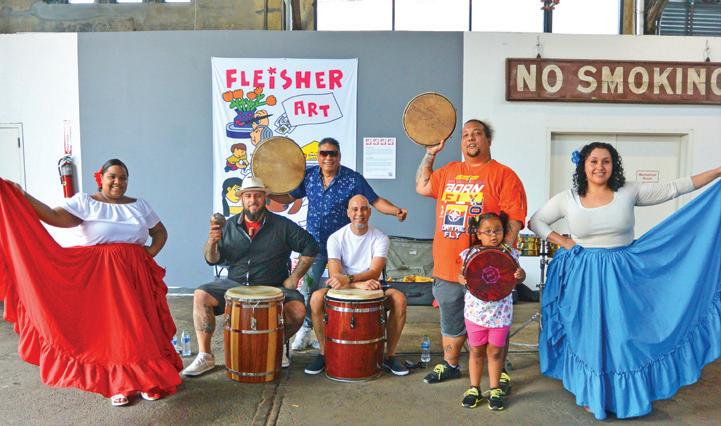
Our first Latinx Craft Fair was a success and this time around we wanted to present a festival with more of everything. The entire outdoor space at Fleisher Art Memorial was activated and featured a helicopter which made an appearance thanks to the American Helicopter Museum & Education Center. People from the entire tri-state area came to be together and celebrate our heritage through our food, our music, our crafts and our dancing. It was important for Casa de Venezuela to address the current pandemic and a clinic was made available for anyone wanting to get vaccinated or tested.
LATINX WINTER CRAFT FAIR NOVEMBER 14, 2021
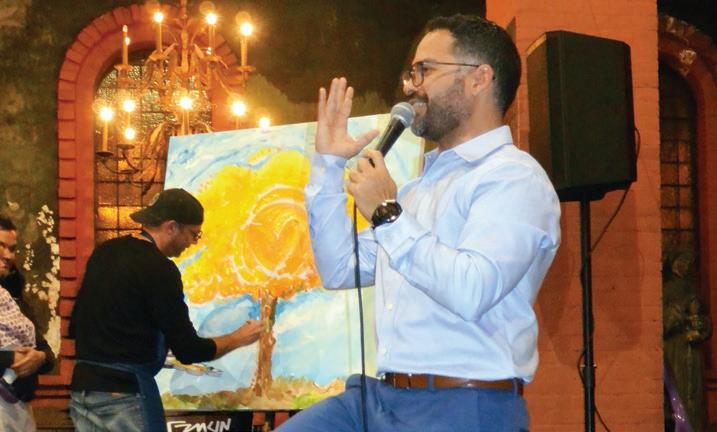
The community spoke and we listened. Back by popular demand, our 2nd Latinx Craft Fair, the Winter Edition, at Cherry Street Pier took place. This time around we presented a spectacle of two performers taking center stage: Ballet Folklórico Yaretzi performing classic Mexican dances followed by Venezuela Danza y Tambor performing traditional Venezuelan dances. The audience was also treated to a holiday extravaganza of traditional and handmade Latin arts and crafts!
LATINX CRAFT FAIR JULY 11, 2021
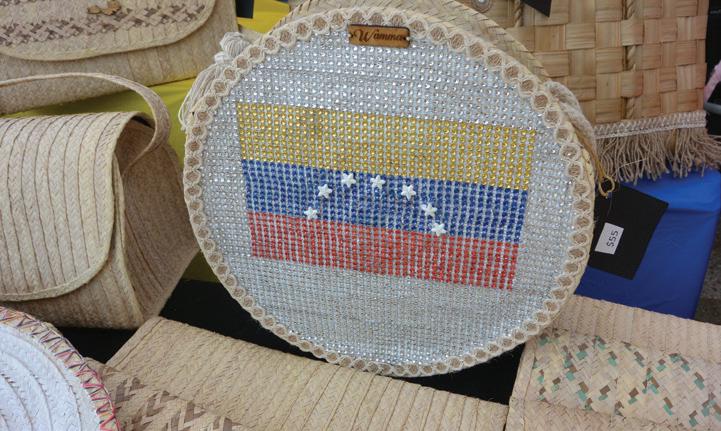
We organized the first Latinx Artisanal Fair to be held at the Cherry Street Pier, a prime location in Philadelphia. Vendors from Latin America and the Caribbean came together to sell their crafts, share their culture and be part of a larger community. This event included Latin food as well as music provided by Los Bomberos de la Calle, a Puerto Rican Bomba and Plena group. Over 1,000 visitors attended this event.
VENEZUELAN SONGBOOK IN THE HOUSE OCTOBER 9, 2021
“As we all know, Venezuela has been destroyed by a criminal dictatorship, but I believe the country’s vibrant art and culture is the foundation for rebuilding the society”. This is Venezuelan artist Juan Carlos Ruiz ’ sentiment. Performing Venezuelan hits in English, he brought all of us together for a beautiful night of music and dance. This sold-out performance was a highlight and also included visual artist Franklin Marval who executed a live painting as the music flowed through the Fleisher Art Memorial Sanctuary space.
CALL FOR LATINX ARTISTS FOR DIÁLOGO 360: NEW RHIZOMES
Inspired by the 360 Cultural Lab mission of placemaking and taking stock of the massive exodus from Venezuela in the last decade, this call for artists living within a 150-mile radius from Philadelphia, attracted the best Latinx artists in our region. This catalog is the result of the collaboration between Fleisher Art Memorial and Casa de Venezuela.
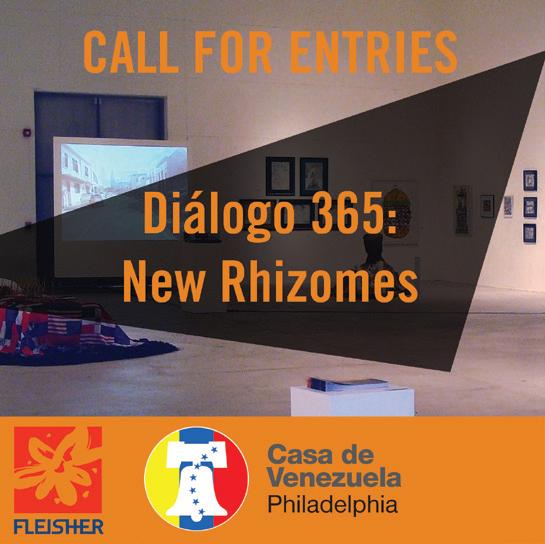
37
COOKING WITH CASA DE VENEZUELA JANUARY 24, 2022
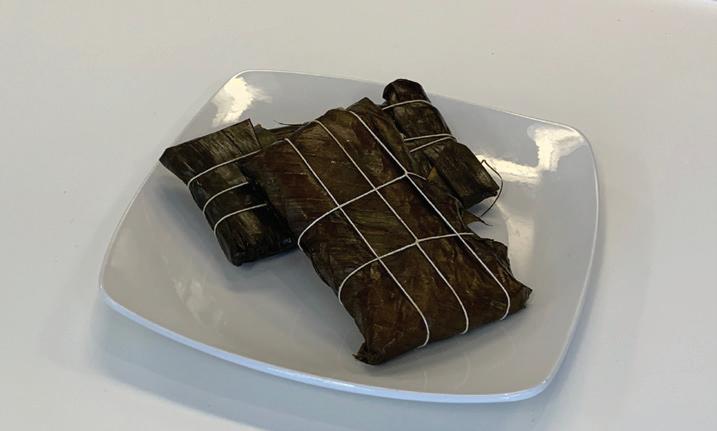
Carlos Silva, renowned local chef from Venezuela, can usually be found cooking at National Mechanics Bar & Restaurant in Old City. Thanks to the Free Library of Philadelphia's Culinary Literacy Center we were able to record a cooking demonstration featuring a traditional Venezuelan holiday dish with Chef Silva: Hallacas. Joining as co-hosts in the video are Emilio Buitrago and Jesús Rincón.
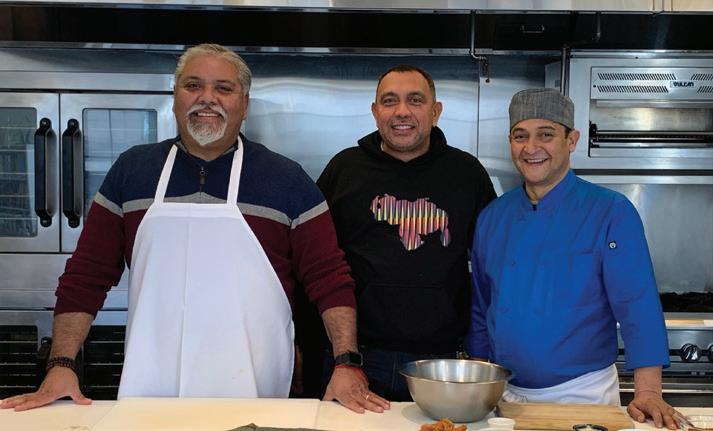
CULTURE LOVE, NOT VIOLENCE–COSECHA EL AMOR, NO LA VIOLENCIA JULY 7, 2022
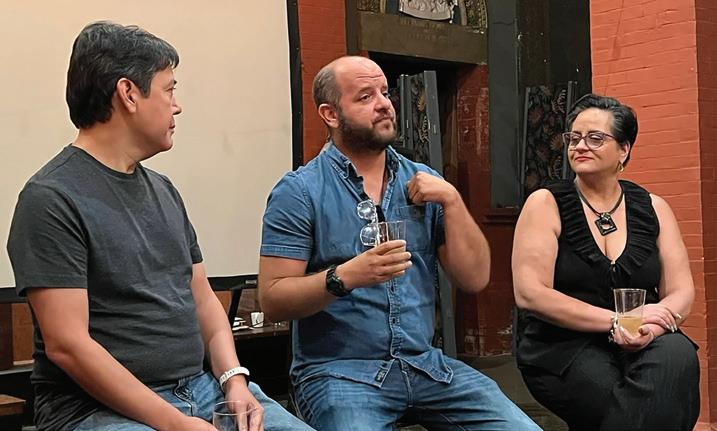

Fostering culture and the arts in our communities is one solution to end gun violence and Casa de Venezuela and Fleisher Art Memorial couldn’t agree more. This concept gave impetus to this powerful event that featured Positive Movement Drumline, a local drumming group spreading the message of love and positivity through drumming in order to end gun violence. The headliner, artist Manuel Oliver from Change the Ref, executed a live mural while speaking about the loss of his son in the Parkland tragedy and challenging us to act in order to change the rhetoric surrounding gun control and violence. We were moved and hope that this conversation continues.
VENEZUELAN FILM FESTIVAL JULY 8, 2022

The very first Venezuelan Film Festival in Philadelphia was part of week-long celebrations commemorating July 5th, the Venezuelan Independence Day. The film Papita, Maní, Tostón,, the highest grossing film in the history of Venezuelan cinema written and directed by Luis Carlos Hueck, made its debut in our area. The festival also featured conversations with another renowned Venezuelan director, Jorge Zambrano who presented the trailer for Dr. José Gregorio Hernández, La Historia de un Milagro. The conversation was led by Arianne Bracho, Executive Director of Madre Tierra Philly.
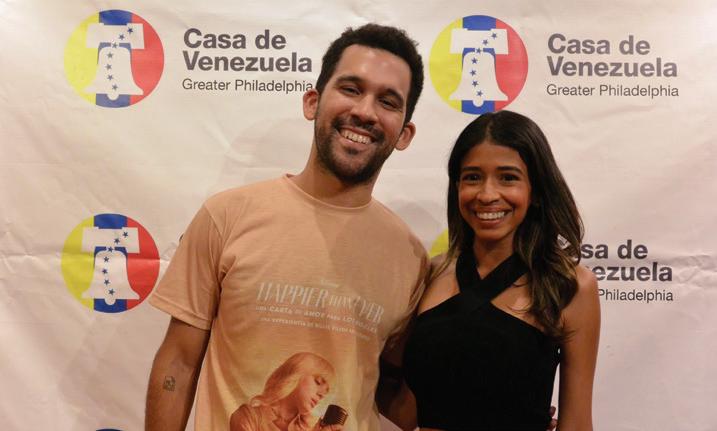
38
VENEZUELAN FESTIVAL JULY 10, 2022


The culmination of week-long celebrations brought the entire community to one location: the FDR Park in South Philadelphia. We celebrated everything Venezuelan with food, craft vendors, games for both children and adults, music, and dance. DJ Jose kept the music going until Tambor y Caña arrived directly from NYC to get everyone dancing to the traditional coastal Afro-Venezuelan beats. Other organizations serving the Latinx community were also there including Guacamaya, a Venezuelan non-profit dedicated to improving the lives of children in Venezuela.

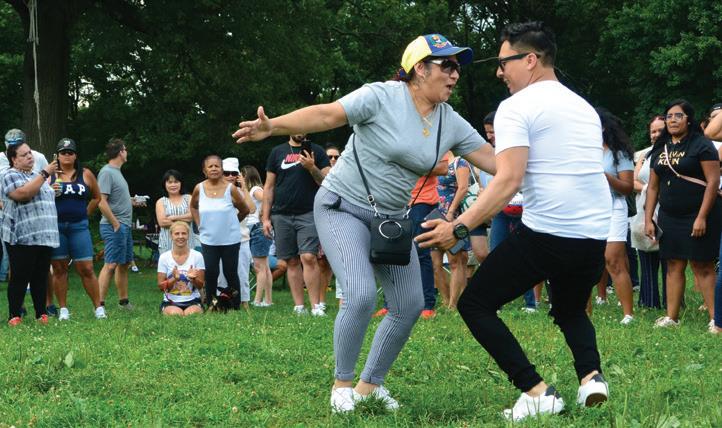
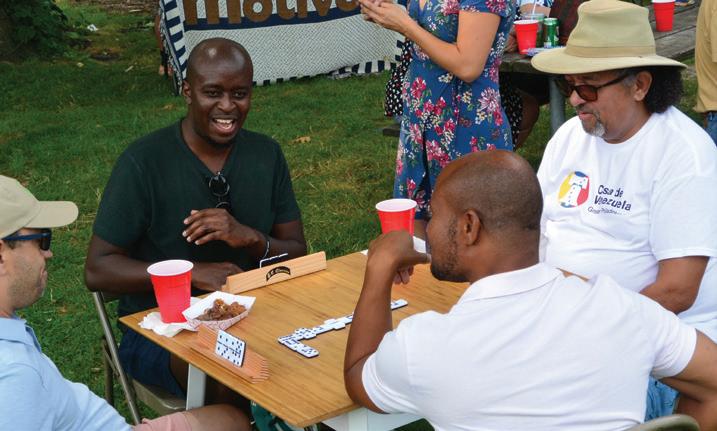
DIÁLOGO 365: NEW RHIZOMES EXHIBITION
AUGUST 12–SEPTEMBER 9, 2022
DIÁLOGO 365: NEW RHIZOMES OPENING RECEPTION
AUGUST 12, 2022
DIÁLOGO 365: NEW RHIZOMES ARTIST TALK
AUGUST 27, 2022
39
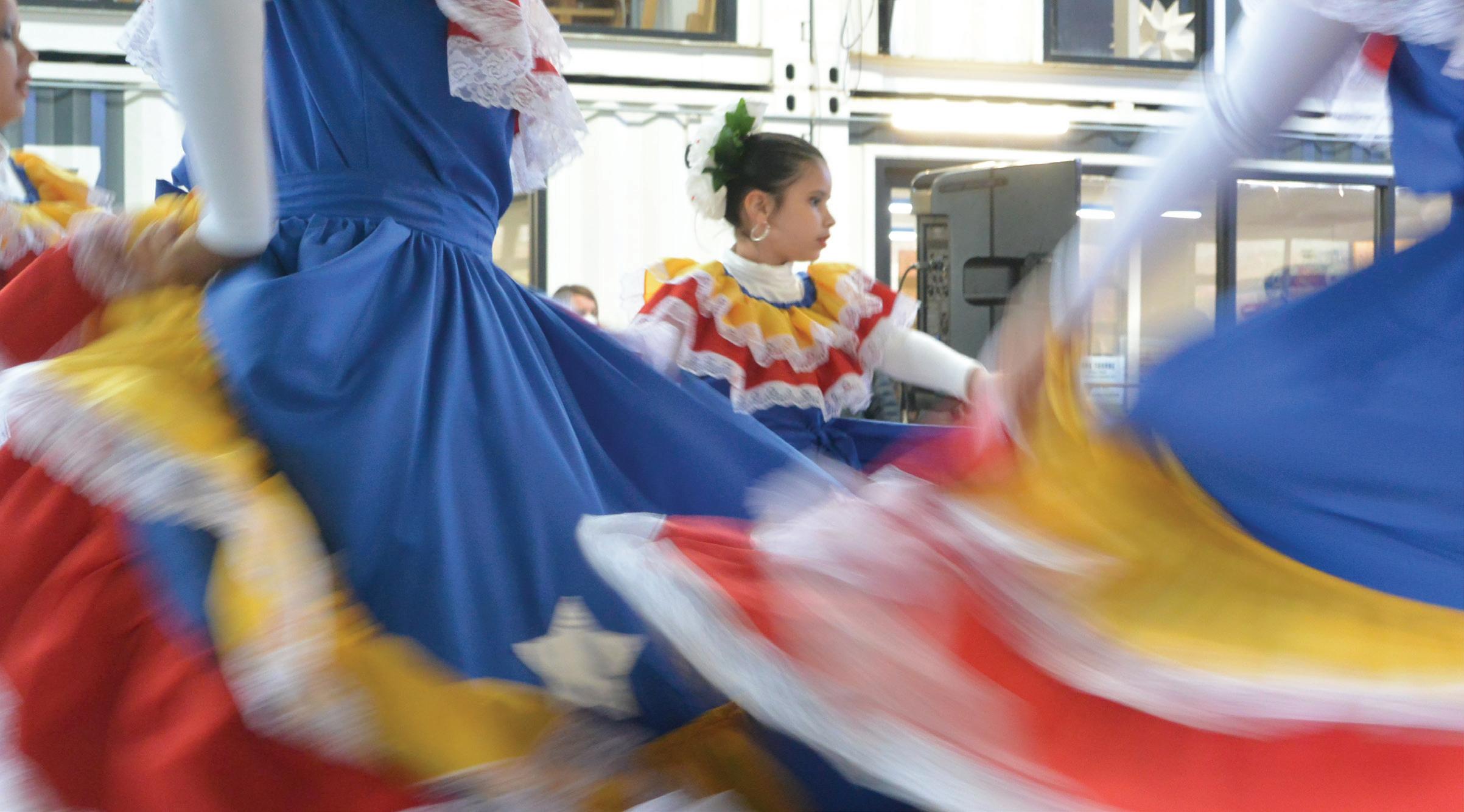
40
Image from Casa de Venezuela–Winter Craft Fair.


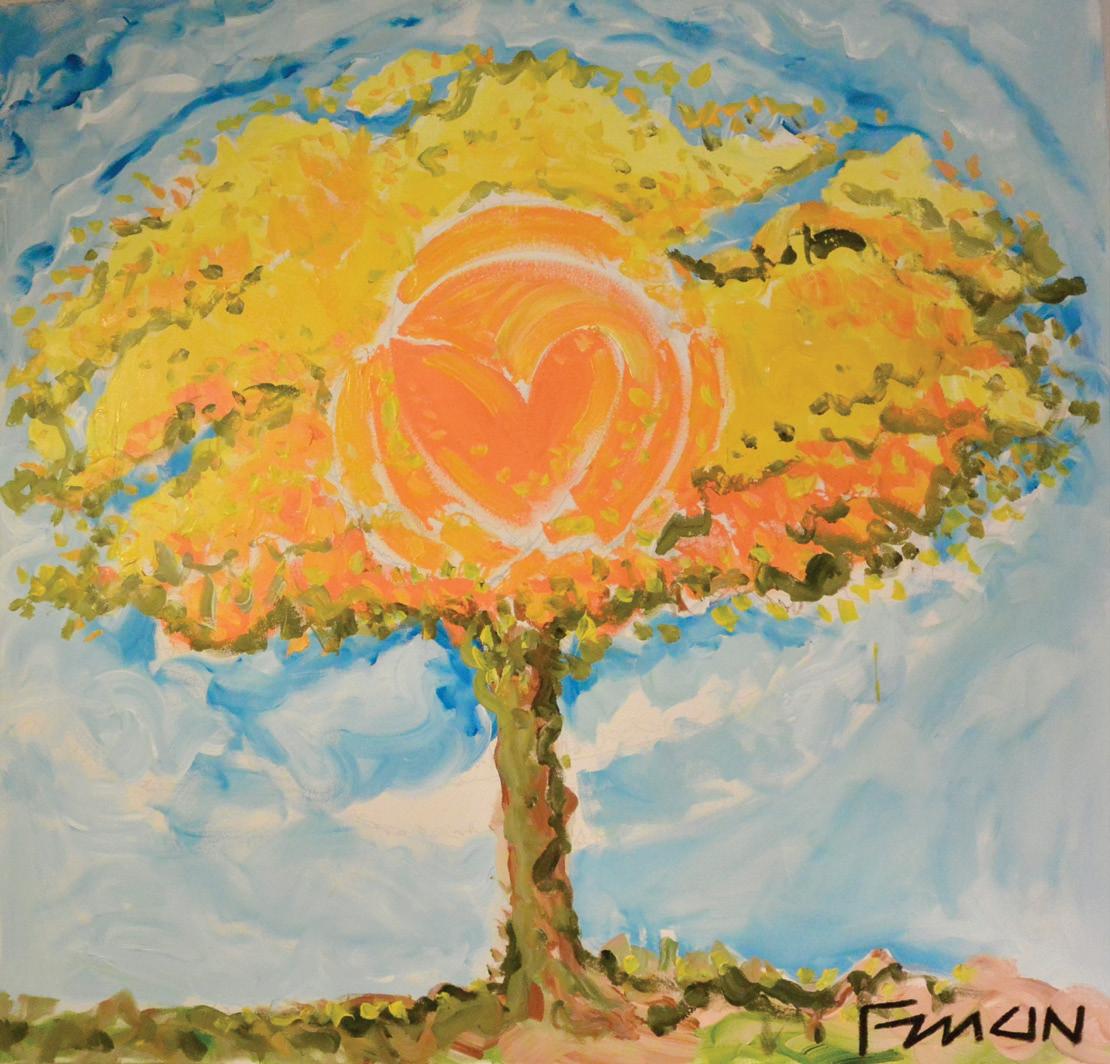
41
Image from Culture Love, Not Violence–Cosecha El Amor, No La Violencia.
Image from Venezuelan Songbook in the House. Art "Araguaney" by Franklin Marval
Index
Artist's works and artist statements.
 Johnny Irizarry Untitled, 2021–2022
Johnny Irizarry Untitled, 2021–2022
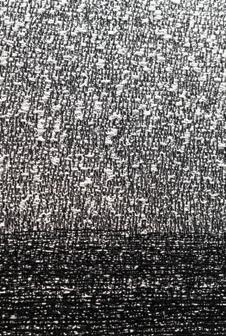
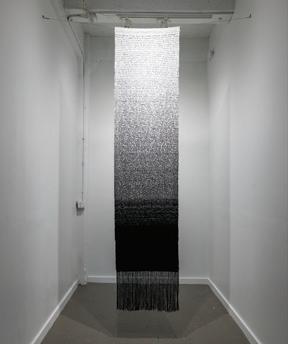

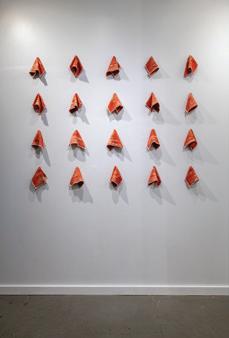
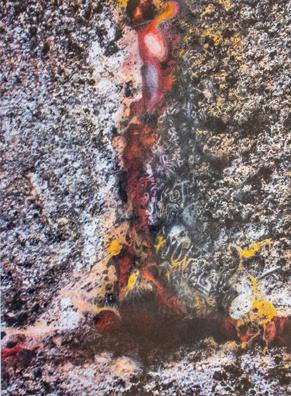
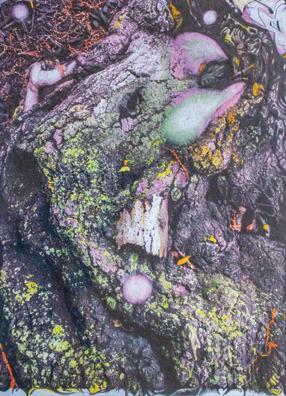
Perhaps my Puerto Rican heritage is responsible for my duality in my art making process. I am interested in exploring apocalyptic surrealist imagery in art. Where the mechanical/technological and organic exist at times in harmony and/or in conflict with the mechanical human-made world and the unknown found within. In my paintings, sculptures, collages, and mixed-media works there is more of a purposeful storytelling imagery with cultural-social-political intent.
johnnyirizarry---artist---educator.com
I am instinctively influenced by my Brazilian cultural heritage in spite of my displacement to the United States, where I embraced a new life and reality. My works often begin with a conscious inspiration from the native vegetation found in Brazil’s tropical forests, Amazon or Mata Atlântica, but take a shape of their own, changing to pod-like imagery organic compositions that are a reflection of the birth process which give both form and content to the work. “Amazon’s Genesis” is an edition of wood cuts born from a desire to re-visit an earlier block matrix and bring these images back to life. The use of bright colors in very free and poetic compositions serves as a metaphor to the restorative cycle of the forest and its people that are, time and again, displaced due to its destruction.
dorisrogers.com
I was born in Medellin, Colombia. My paintings often show overpopulated capital cities in developing countries. Through my work, I hope to shed light on the chaotic and unavoidable processes of urbanization in our globalized and overpopulated world. Through the drawing of precise lines and intricate compositions, I aim at depicting elements that inhabit clustered spaces, where nature repossesses and reclaims human places, sometimes as post-apocalyptic visions or utopian narratives.
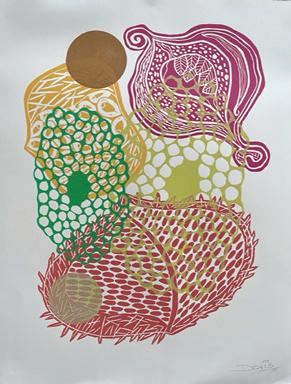
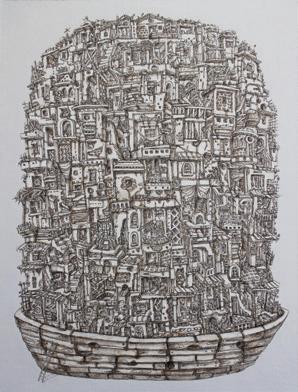
alexisduque.net
Venezuelan-born and Philadelphia-based artist Ana Mosquera's work lives at the interface of the digital and physical worlds, drawing inspiration from architecture, urbanism, cyberspace memories, and language. She relies on the unexpected to collect and appropriate digital materials, which she then meticulously compiles using self developed processes. This practice is informed by her experience of dislocation as the result of migration, and her reliance on technology to access emotional proximity, memories, and resources.
anamosquera.com
43
Alexis Duque Boat, 2015
Acrylic on canvas. 16 x 12 inches
Mixed Media. 20 X 16 inches
Doris Nogueira-Rogers Amazon’s Genesis (series of 6), 2021 Woodcut. 30 x 22 inches
Ana Mosquera Duran Rhumb Lines, 2020 Handwoven cotton ikat, data extracted from Venezuelan Facebook Groups. Variable dimensions.
Trochas 20 mil Pesos, 2019 TC2 woven cotton, posts on how to cross the border between Venezuela and Colombia scrapped from Facebook Group “Venezolanos en Cucuta”. 25 x 120 inches
Wolfgang Gil
Resonant Bodies #1 Variation #1, 2020
Polished aluminum.

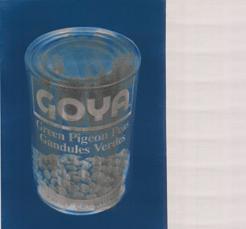
Each bar: 8 x 59 x 5.5 inches
Resonant Bodies #8 , 2021
Aluminum, steel, and acrylic sheet. Custom playback system.
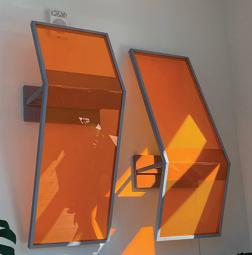
Each module: 20 x 50 x 15 inches
My installations explore the sculptural quality of sound, inviting us to contemplate listening as a phenomenon. They create opportunities for experiencing external space as well as our internal perceptual processes. I’m Venezuelan-born American artist who lives and works in Newark, New Jersey, and employs sound as a malleable material with curves, edges, and changing geometries—a medium that can be stretched in all dimensions. In order to further my sculptural approach to sound, I partnered with the Newark Museum of Art’s curatorial team to create a dialogue between my work and selections from the Museum’s collection. Sonic Geometries at The Newark Museum of Art highlighted geometric abstraction—a strength of Newark’s American art holdings—including a sculpture by Sol LeWitt and paintings and works on paper by Sam Gilliam, Donald Judd, Victor Davson, and Richard Anuszckiewicz. Visitors were immersed in a multi-sensory and intergenerational experience of space, shape, color, and sound.
wolfganggil.com
Idalia Vasquez-Achury
I was born in Colombia and use my brown body to explore the complex physical and mental processes that occur while inhabiting intermediate spaces formed by rigid group identities in constant struggle. This gradual amalgamation of contrasting realms is present in my work as the diffuse borders in tension de la Marisma*, where the rivers meet the sea. (*Spanish: Marisma/ estuario. English: estuary)

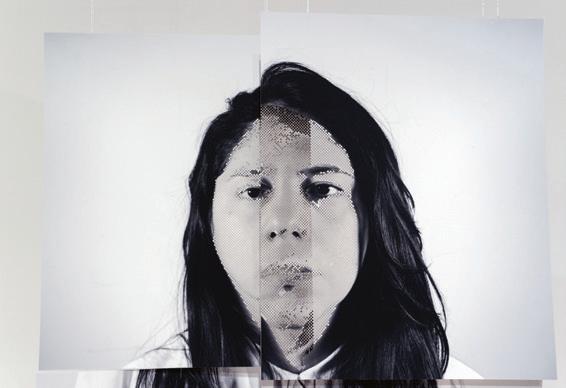
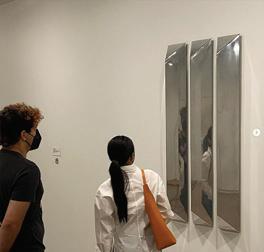 Kalena Marshall
Kalena Marshall
idaliavasquez.com
Making food is something I grew up learning as a way to connect with my Puerto Rican culture. With this body of work, I did a play on the Warhol soup can series to mimic the idea of production by making multiple prints of the cans. In recent years the Spanish company GOYA has had many problems with the Latin community. I want the viewer to acknowledge and reconsider whether or not supporting GOYA is just a modern form of colonization. The company profits from the culture contained in their packaged goods and many of the workers in their factories are Latin themselves. These GOYA products are often found in local tiendas in Latin neighborhoods owned by members of the community. I took something that is so beloved in the Latin community and posed the question of whether or not using these products really connects us to our African and indígenous roots and culture. What does buying GOYA products do to the Earth? Does the company give my community anything in return? What is our role as descendants of our ancestors? Are we strengthening or sabotaging our community by continuing this narrative? GOYA is posed as a large part of Latin identity, but at what cost?
 Saleme
Saleme
I am a Venezuelan American artist. My work is inspired by the working-class immigrant community, where I see myself reflected and affected by their hardships. I firmly believe that art can widen perspectives and educate communities. Therefore, my primary goal is to create work that is accessible and empowering for all. Conveying joy and beauty are integral components of my art. The essential element in my work is color, which is always specific to each project where the artwork is a source of light.
nancysaleme.wixsite.com/nancy-saleme-art
44
Arroz y no Gandules, 2022 Cyanotype with Van Dyke Brown. 22 x 15 inches. Triptych 1: A series
12,980 Masque, 2022 Archival inkjet print. 34 x 44 inches
Nancy
No More Noisy Silence, 2020 Resin and wall decal. Wall vinyl: 28 x 28 inches, resin piece 11 x 11 inches
Patricia Cazorla
One Walk, 2018
Digital prints, acrylic paint, pan, and pots, site-specific. 84 x 360 inches
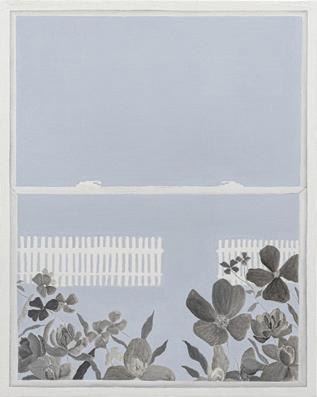

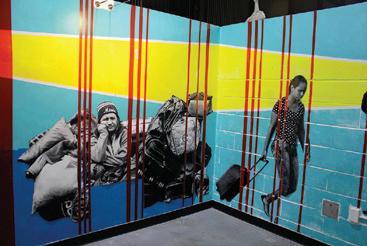 Tania Qurashi
Tania Qurashi


Your Garden Grows, 2021 Oil on panel. 20 x 16 inches
I identify as Venezuelan American. This site-specific installation is comprised of life-size black and white photographs. This mural reflects Venezuela’s geometric abstractionism art movement, a pile of pans and cooking utensils that are used in marches and protests, and the sound collected from street protests. The centerpiece is “Justicieros,” a large mixed media drawing depicting young protesters.

patcazorla.wixsite.com/patricia-cazorla-art
My work is rooted in my identity as the daughter of immigrants from Pakistan and Guatemala. Through paintings, drawings, and objects, I explore the cultural, racial, and ethnic melancholy and isolation of living in an American suburb. Gardens, windows, fences, and objects respond to the many facets of my identity as a child of immigrants, a multiracial and multiethnic woman, subjected to American history and idealism.

taniaqurashi.com
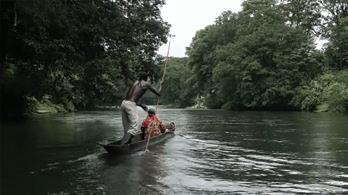 Alejandro Ceballos
Patricia Patzi
Alejandro Ceballos
Patricia Patzi
I was born in Colombia but half of my heart was raised in Venezuela. This work is part of my “And the Rock Cried Out ” series. "And the rock cried out " refers to a poem within a story by Ray Bradbury, where someone tries to hide behind a rock but it screams "there is no place to hide here", a subtle way of saying that there is no escape. This work was executed in Buenaventura, Colombia, a coastal seaport city in need of social reform. This community has been oppressed by armed conflict and a corrupt government trying to silence and effectively “hide” them, metaphorically, behind a rock. It is my intention to give those silenced people a voice.
I grew up in Bolivia and identify as Bolivian and Colombian. This painting is part of “Always With Me,” a series of self-portraits dealing with the subject of mental health. The body of work aims to not only depict the visual aspects or faces of depression and other emotions, but also reflect and amplify the complexity of these emotions through the process and application of paint. Though the paintings all have an underlying blue theme, whether in the backgrounds or in the figures, they all also have bright colors and patterns throughout, alternating between the mental state of the subjects and the reality of their environments.
patriciapatzi.com
45
La Bahía de la Cruz, 2019 Film. 1920 x 1080 px, 8:00 min
Amor Propio. 2021 Oil on Canvas. 30 x 48 inches
Henry Bermudez Untitled,



2022
Mixed media. 2 x 8 inches
My work embraces a hybrid of myths, symbols and religious lore from pre-Hispanic Judeo-Christian and Afro-Caribbean influences, all of which are part of my Venezuelan heritage. I use a compendium of aesthetics in order to create art beyond Western tradition. Through the processes and mediums in my work I intend to transcend timelines and cultural boundaries, juxtaposing mystic symbols with western rationality. This blend of cultural diversity is my autobiographical vision that further defines itself through immersion into cultures beyond the one of my birth.
henrybermudezart.com
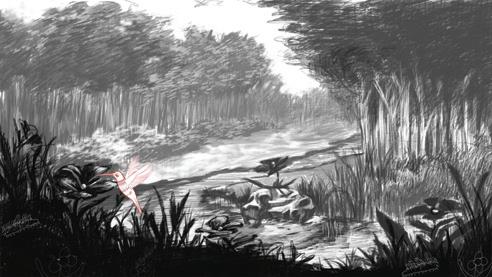
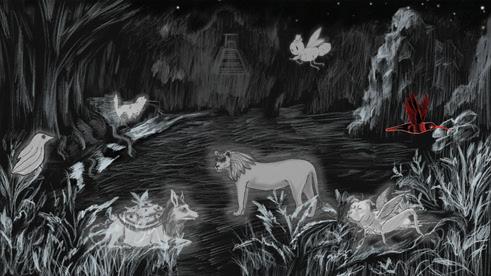 Alissa Roach Sydenham Villas, 2020
Alissa Roach Sydenham Villas, 2020
I am a multimedia artist and curator born in Kingston, Jamaica, now based in Philadelphia, PA. I stand at the intersection of multiple identity demarcations (queer, black, immigrant, woman), drawing from each to express their shared tension. My interest lies in dissecting feelings of displacement in an attempt to transcend place, creating relationships between objects and bodies that would otherwise not meet. I work with time which allows me to explore the ephemeral, reenacting fragments of memories then circling back to document them in order to create my work. Technology plays alarge role in this process and my work explores the unreliable nature of memory as I investigate what is lost in digital recreation. In this way, the glitch manifests itself as the tense link between reality, spirituality, and fiction. By reinterpreting objects through performance I attempt to create personal rituals, and confront viewers with my own body.
alissaroach.com
Anthony Vega Denotations (#sunglasses), 2021 Acrylic on Fabric. 40 x 40 inches
I am of Cuban and Puerto Rican descent and my work explores my relationship to and insecurities with culture and identity, social interpretation, and how we apply meaning personally and irrationally through pictures and media. Through social media I can, from a distance, vicariously and voyeuristically connect to culture and identity. I borrow other people’s images. I copy pictures I find online that I like, find important, pretty, or sometimes funny. I translate, pixelate, edit, and try to copy and re-solidify these pictures through material, to construct something both deeply meaningful and profoundly superficial.
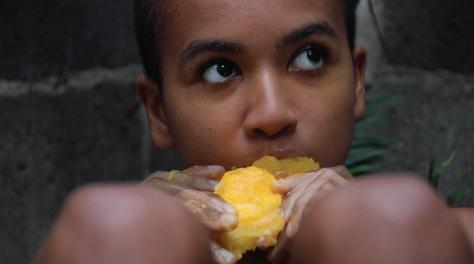
avegafineart.com
Superheroes Community artist collective & LEMUS Superheroes, 2021 Video. Length: 5:10
The Superheroes Community Artists Collective is made up of Mexican members and members of Mexican heritage. Taller de Superheroes (Superhero Workshop) is an exploration of migrant strength and ancestral memories that breathe ancient time and personal symbolism, and are given as heirlooms by migrants to their children. Migrant mothers and fathers worked intimately to show us their memories of their places of origin, the scars they bear, and the histories that they pass on to the next generation through the limitless creativity they carry inside themselves. Together, these artists created superhero costumes inspired by conversations and art built in tandem with their children. In the costumes, the artists included family legends, native iconography, and Mexican prehispanic myths. Using this tangible inspiration as a creative foundation, they composed poems that weave together their experiences with the magic of the natural world. These poems tella story half inverse and half in a vibrant animation that serves a visual alebrije (Mexican folk art of fantastical creatures).
46
Video and sound. Max length 9:05
Jotham Malavé Mar de angustias, 2020 Oil on canvas. 32 x 24 inches
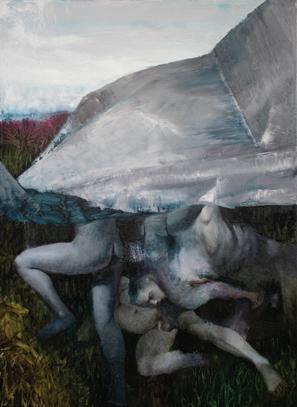
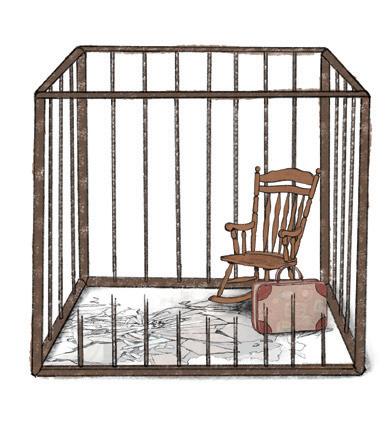
I explore my Puerto Rican heritage and humanity through figurative painting, drawing, and sculpture. In PR, our political history, historical art themes, and religious traditions have been buried under oppressive colonial culture and politics for centuries. These stories of oppression fascinate me. I research and reimagine them in order to keep the sociopolitical context of my island alive for current and future generations. I investigate and explore the dynamics of realism and illusion through oral history and documents taken from the news and government publications. This information goes through a process of re-enactment where the models assume the roles of the characters in a play. I manipulate this interaction of the landscape and figures, both digitally and through painting, to establish a link between reality and the imagined. By questioning experience and memory, I meditatively reflect on my cultural history and traditions.
jothammalave.com
Cedeño
Lina Cedeño
I was born and raised in Colombia where I developed a critical view of social, economic,political, religious and cultural issues. My work brings a visual dialogue about the beauty of humanity, yet also the beast that lives within the construct of society. I use different media to develop this visual language. Engaging myself in ideas, feelings, stories and materials helps me to visualize how I want my pieces to speak to audiences, and I also come to understand my own role in the process.
Pedro Ospina
Born in Bogota, Colombia, and raised in New York City, my life’s path has been dedicated to simultaneously exposing myself to a wide range of learning experiences and cultures and sharing that information and knowledge with those I encounter. To this end I have sought out and absorbed experiences from a variety of sources: from an academic arts education in the U.S to apprenticeships with artisans in Mexico, Wales, Colombia, and Brazil. I have taught in inner city public schools throughout Pennsylvania and New York, and have done extensive work with marginalized communities in Colombia and Brazil. Presently, I am the founder and director of The Open Kitchen Sculpture Garden, an innovative community gathering space based on food and art.
47
Lina
& Pedro Ospina Untitled Mixed media. 5 x 6 x 5.5 feet
ISBN 979-8-218-04712-2
360 Culture Lab has been supported by The Pew Center for Arts & Heritage.
Fleisher
Art Memorial 719 Catharine Street Philadelphia, PA 19147-2811
9 798218 047122 90000>



 Cover art by Henry Bermudez, Untitled, 2022, Mixed Media, 12 x 8 inches
Cover art by Henry Bermudez, Untitled, 2022, Mixed Media, 12 x 8 inches






































































 Kalena Marshall
Kalena Marshall
 Saleme
Saleme


 Tania Qurashi
Tania Qurashi




 Alejandro Ceballos
Patricia Patzi
Alejandro Ceballos
Patricia Patzi




 Alissa Roach Sydenham Villas, 2020
Alissa Roach Sydenham Villas, 2020



